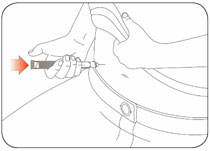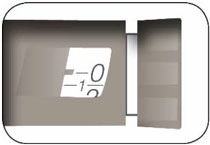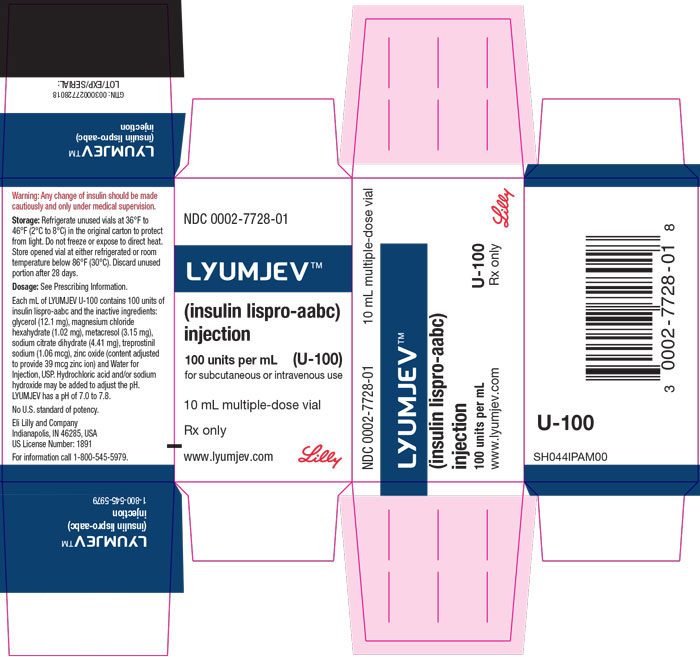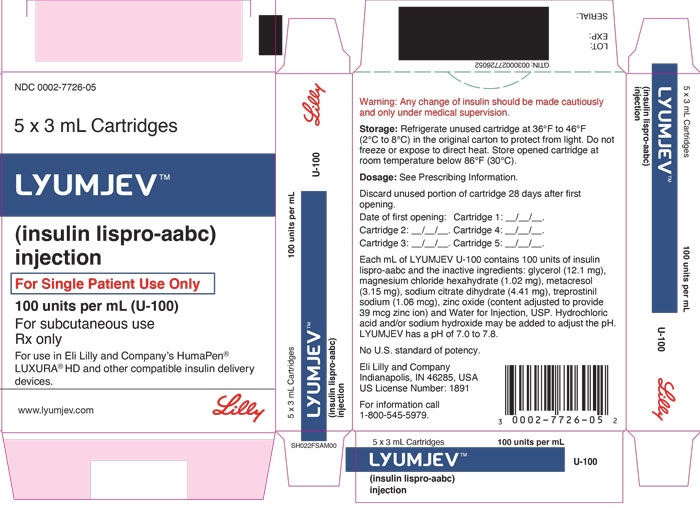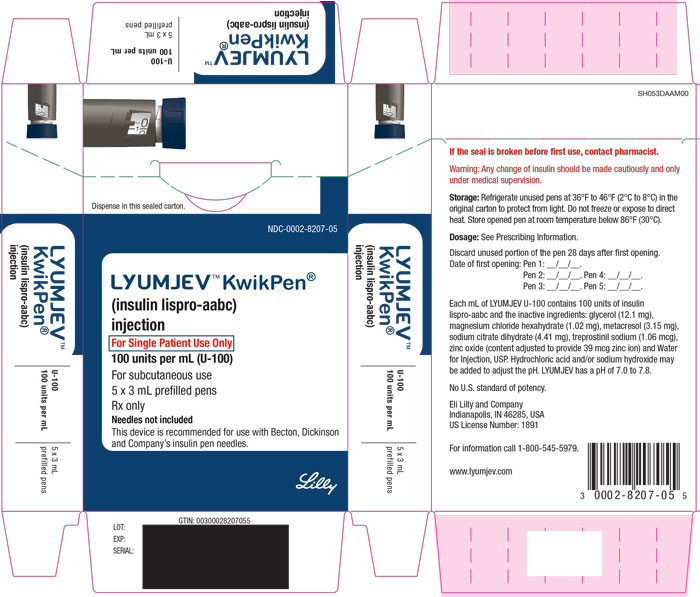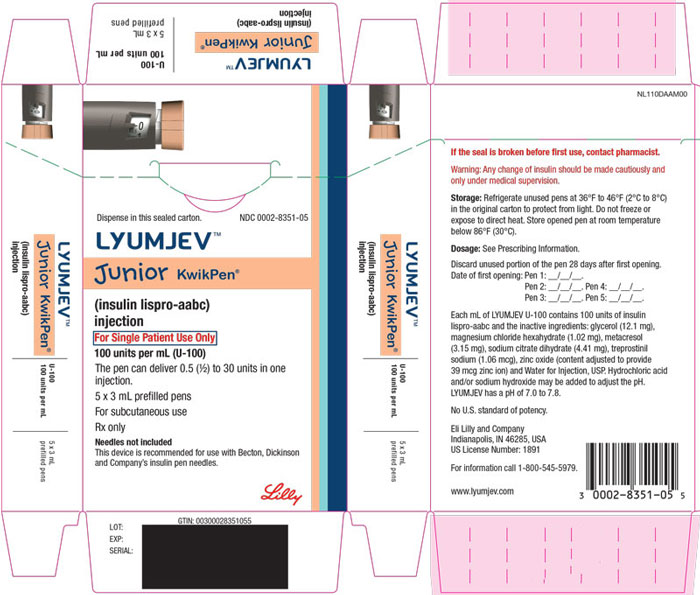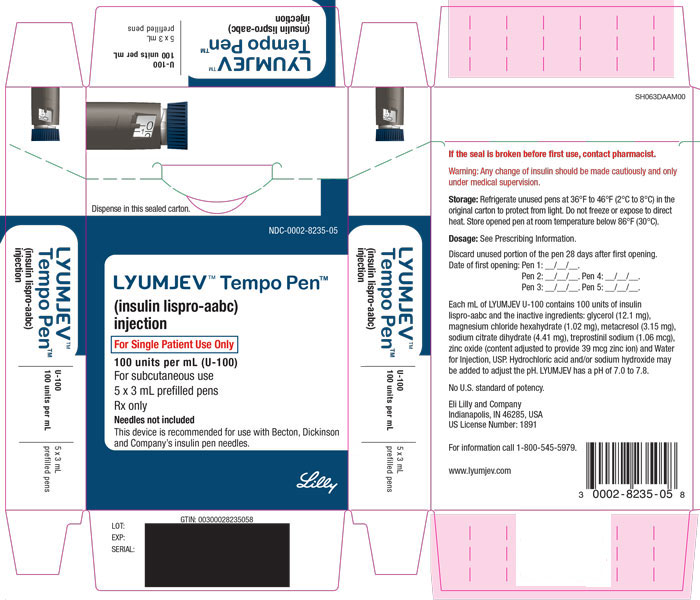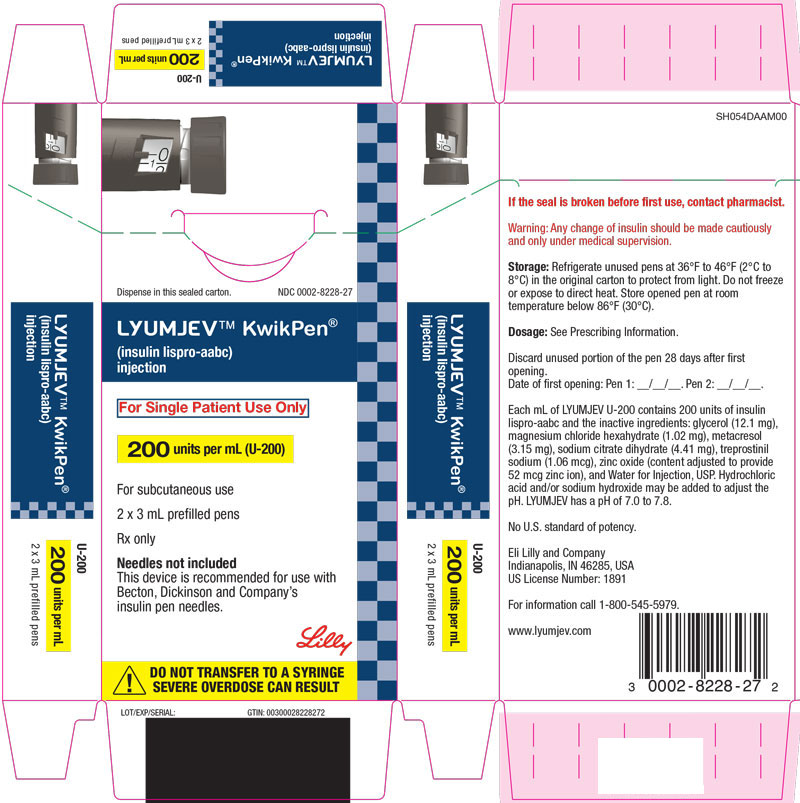FULL PRESCRIBING INFORMATION
1 INDICATIONS AND USAGE
LYUMJEV® is indicated to improve glycemic control in adult and pediatric patients with diabetes mellitus.
2 DOSAGE AND ADMINISTRATION
2.1 Important Administration Instructions
- Always check insulin labels before administration [see Warnings and Precautions (5.4)].
- Inspect LYUMJEV visually before use. It should appear clear and colorless. Do not use LYUMJEV if particulate matter and discoloration is seen.
- Use LYUMJEV prefilled pens with caution in patients with visual impairment that may rely on audible clicks to dial their dose.
- Do not perform dose conversion when using any LYUMJEV U-100 or U-200 prefilled pens. The dose window of LYUMJEV prefilled pens shows the number of units of LYUMJEV to be delivered and no conversion is needed.
- Do not transfer LYUMJEV U-200 from the prefilled pen to a syringe for administration [see Warnings and Precautions (5.4)].
- Do not mix LYUMJEV with any other insulin products.
- Do not administer LYUMJEV U-200 using continuous subcutaneous infusion insulin pump.
- Do not administer LYUMJEV U-200 intravenously.
2.2 Route of Administration Instructions
Subcutaneous Injection for LYUMJEV U-100 or U-200
- Administer LYUMJEV at the start of a meal or within 20 minutes after starting a meal subcutaneously into the abdomen, upper arm, thigh, or buttocks.
- Rotate injection sites within the same region from one injection to the next to reduce the risk of lipodystrophy and localized cutaneous amyloidosis. Do not inject into areas of lipodystrophy or localized cutaneous amyloidosis [see Adverse Reactions (6.1, 6.2)].
- LYUMJEV given by subcutaneous injection should generally be used in regimens with intermediate or long-acting insulin.
- The LYUMJEV U-100 KwikPen, LYUMJEV U-100 Tempo Pen, and LYUMJEV U-200 KwikPen each dial in 1 unit increments and deliver a maximum dose of 60 units per injection.
- The LYUMJEV U-100 Junior KwikPen dials in 0.5 unit increments and delivers a maximum dose of 30 units per injection.
Continuous Subcutaneous Insulin Infusion (Insulin Pump) for LYUMJEV U-100 Only
- Do not administer LYUMJEV U-200 using an insulin pump.
- Refer to the continuous subcutaneous insulin infusion pump user manual to see if LYUMJEV can be used with the insulin pump. Use LYUMJEV in accordance with the insulin pump system's instructions for use.
- Administer LYUMJEV U-100 by continuous subcutaneous infusion in a region recommended in the instructions from the pump manufacturer. Rotate infusion sites within the same region to reduce the risk of lipodystrophy and localized cutaneous amyloidosis. Do not infuse into areas of lipodystrophy or localized cutaneous amyloidosis [see Warnings and Precautions (5.2) and Adverse Reactions (6.1)].
- Train patients using continuous subcutaneous insulin infusion (CSII) therapy to administer insulin by injection and have alternate insulin therapy available in case of insulin pump failure [see Warnings and Precautions (5.8)].
- Change LYUMJEV U-100 in the pump reservoir at least every 9 days or according to the pump user manual, whichever is shorter.
- Change the infusion sets and the infusion set insertion site according to the manufacturer's user manual.
- Do not dilute or mix LYUMJEV U-100 when administering by CSII.
- Do not expose LYUMJEV in the pump reservoir to temperatures greater than 98.6°F (37°C).
Intravenous Administration for LYUMJEV U-100 Only
- Do not administer LYUMJEV U-200 intravenously.
- Administer LYUMJEV U-100 intravenously only under medical supervision with close monitoring of glucose and potassium levels to avoid hypoglycemia and hypokalemia [see Warnings and Precautions (5.3, 5.5)].
- Dilute LYUMJEV U-100 to a concentration of 1 unit/mL using 0.9% Sodium Chloride Injection, USP or 5% Dextrose Injection, USP infusion solutions. Dilutions to concentrations below 1 unit/mL are not recommended.
- Diluted LYUMJEV may be stored for up to 4 days when refrigerated or up to 12 hours at room temperature [see HOW SUPPLIED/STORAGE AND HANDLING (16.2)].
2.3 General Dosage Instructions
- Individualize and adjust the dosage of LYUMJEV based on the patient's metabolic needs, glucose monitoring results, and glycemic control goal.
- If converting from another mealtime insulin to LYUMJEV, the change can be done on a unit-to-unit basis.
- Dosage adjustments may be needed when switching from another insulin, with changes in physical activity, changes in concomitant medications, changes in meal patterns (i.e., macronutrient content or timing of food intake), changes in renal or hepatic function or during acute illness to minimize the risk of hypoglycemia or hyperglycemia [see Warnings and Precautions (5.2, 5.3), Drug Interactions (7) and Use in Specific Populations (8.6, 8.7)].
- During changes to a patient's insulin regimen, increase the frequency of glucose monitoring [see Warnings and Precautions (5.2)].
- Instruct patients who forget a mealtime dose to monitor their glucose level to decide if an insulin dose is needed, and to resume their usual dosing schedule at the next meal.
3 DOSAGE FORMS AND STRENGTHS
Injection: 100 units/mL (U-100) clear and colorless solution available as:
- 10 mL multiple-dose vial
- 3 mL single-patient-use LYUMJEV KwikPen
- 3 mL single-patient-use LYUMJEV Junior KwikPen
- 3 mL single-patient-use LYUMJEV Tempo Pen
- 3 mL single-patient-use cartridges
Injection: 200 units/mL (U-200) clear and colorless solution available as:
- 3 mL single-patient-use LYUMJEV KwikPen
4 CONTRAINDICATIONS
LYUMJEV is contraindicated:
- during episodes of hypoglycemia.
- in patients with hypersensitivity to insulin lispro-aabc or any of the excipients in LYUMJEV.
5 WARNINGS AND PRECAUTIONS
5.1 Never Share a LYUMJEV Prefilled Pen, Cartridge, or Syringe Between Patients
LYUMJEV prefilled pens or cartridges should never be shared between patients, even if the needle is changed. Patients using LYUMJEV vials must never share needles or syringes with another person. Sharing poses a risk for transmission of blood-borne pathogens.
5.2 Hyperglycemia or Hypoglycemia with Changes in Insulin Regimen
Changes in an insulin regimen (e.g., insulin, insulin strength, manufacturer, type, injection site or method of administration) may affect glycemic control and predispose to hypoglycemia [see Warnings and Precautions (5.3)] or hyperglycemia. Repeated insulin injections into areas of lipodystrophy or localized cutaneous amyloidosis have been reported to result in hyperglycemia; and a sudden change in the injection site (to an unaffected area) has been reported to result in hypoglycemia [see Adverse Reactions (6.1)].
Make any changes to a patient's insulin regimen under close medical supervision with increased frequency of blood glucose monitoring. Advise patients who have repeatedly injected into areas of lipodystrophy or localized cutaneous amyloidosis to change the injection site to unaffected areas and closely monitor for hypoglycemia. For patients with type 2 diabetes, dosage adjustments of concomitant anti-diabetic products may be needed.
5.3 Hypoglycemia
Hypoglycemia is the most common adverse reaction associated with insulins, including LYUMJEV [see Adverse Reactions (6.1)]. Severe hypoglycemia can cause seizures, may lead to unconsciousness, may be life-threatening, or cause death. Hypoglycemia can impair concentration ability and reaction time; this may place an individual and others at risk in situations where these abilities are important (e.g., driving or operating other machinery). LYUMJEV, or any insulin, should not be used during episodes of hypoglycemia [see Contraindications (4)].
Hypoglycemia can happen suddenly and symptoms may differ in each individual and change over time in the same individual. Symptomatic awareness of hypoglycemia may be less pronounced in patients with longstanding diabetes, in patients with diabetic nerve disease, in patients using medications that block the sympathetic nervous system (e.g., beta-blockers) [see Drug Interactions (7)], or in patients who experience recurrent hypoglycemia.
Risk Factors for Hypoglycemia
The risk of hypoglycemia after an injection is related to the duration of action of the insulin and, in general, is highest when the glucose lowering effect of the insulin is maximal. The timing of hypoglycemia usually reflects the time-action profile of the administered insulin formulation. As with all insulins, the glucose lowering effect time course of LYUMJEV may vary in different individuals or at different times in the same individual and depends on many conditions, including the area of injection as well as the injection site blood supply and temperature [see Clinical Pharmacology (12.2)]. Other factors which may increase the risk of hypoglycemia include changes in meal pattern (e.g., macronutrient content or timing of meals), changes in level of physical activity, or changes to co-administered medication [see Drug Interactions (7)]. Patients with renal or hepatic impairment may be at higher risk of hypoglycemia [see Use in Specific Populations (8.6, 8.7)].
Risk Mitigation Strategies for Hypoglycemia
Patients and caregivers must be educated to recognize and manage hypoglycemia. Self-monitoring of glucose plays an essential role in the prevention and management of hypoglycemia. In patients at higher risk for hypoglycemia and patients who have reduced symptomatic awareness of hypoglycemia, increased frequency of glucose monitoring is recommended.
5.4 Hypoglycemia Due to Medication Errors
Accidental mix-ups between insulin products have been reported. To avoid medication errors between LYUMJEV and other insulins, instruct patients to always check the insulin label before each injection.
Do not transfer LYUMJEV U-200 from the LYUMJEV KwikPen to a syringe. The markings on the insulin syringe will not measure the dose correctly and can result in overdosage and severe hypoglycemia [see Dosage and Administration (2.1) and Warnings and Precautions (5.3)].
5.5 Hypokalemia
All insulins, including LYUMJEV, cause a shift in potassium from the extracellular to intracellular space, possibly leading to hypokalemia. Untreated hypokalemia may cause respiratory paralysis, ventricular arrhythmia, and death. Monitor potassium levels in patients at risk for hypokalemia if indicated (e.g., patients using potassium-lowering medications, patients taking medications sensitive to serum potassium concentrations).
5.6 Hypersensitivity Reactions
Severe, life-threatening, generalized allergy, including anaphylaxis, can occur with insulins, including LYUMJEV [see Adverse Reactions (6.1)]. If hypersensitivity reactions occur, discontinue LYUMJEV; treat per standard of care and monitor until symptoms and signs resolve. LYUMJEV is contraindicated in patients who have had hypersensitivity reactions to insulin lispro-aabc or any of its excipients [see Contraindications (4)].
5.7 Fluid Retention and Heart Failure with Concomitant Use of PPAR-Gamma Agonists
Thiazolidinediones (TZDs), which are peroxisome proliferator-activated receptor (PPAR)-gamma agonists, can cause dose-related fluid retention, particularly when used in combination with insulin. Fluid retention may lead to or exacerbate heart failure. Patients treated with insulin, including LYUMJEV, and a PPAR-gamma agonist should be observed for signs and symptoms of heart failure. If heart failure develops, it should be managed according to current standards of care, and discontinuation or dose reduction of the PPAR-gamma agonist must be considered.
5.8 Hyperglycemia and Ketoacidosis Due to Insulin Pump Device Malfunction
Pump or infusion set malfunctions can lead to a rapid onset of hyperglycemia and ketoacidosis. Prompt identification and correction of the cause of hyperglycemia or ketosis is necessary. Interim therapy with subcutaneous injection of LYUMJEV may be required. Patients using continuous subcutaneous insulin infusion pump therapy must be trained to administer insulin by injection and have alternate insulin therapy available in case of pump failure [see Dosage and Administration (2.2), How Supplied/Storage and Handling (16.2), and Patient Counseling Information (17)].
6 ADVERSE REACTIONS
The following adverse reactions are also discussed elsewhere:
- Hypoglycemia [see Warnings and Precautions (5.3)].
- Hypoglycemia Due to Medication Errors [see Warnings and Precautions (5.4)]
- Hypokalemia [see Warnings and Precautions (5.5)].
- Hypersensitivity Reactions [see Warnings and Precautions (5.6)].
6.1 Clinical Trials Experience
Because clinical trials are conducted under widely varying conditions, adverse reaction rates observed in the clinical trials of a drug cannot be directly compared to rates in the clinical trials of another drug, and may not reflect the rates actually observed in clinical practice.
Adverse Reaction Database – Adult Patients with Type 1 and Type 2 Diabetes
The data in Table 1 reflect the exposure of 780 adult patients with type 1 diabetes to LYUMJEV with a mean exposure duration of 26 weeks [see Clinical Studies (14.2)]. The mean age was 44 years, the mean duration of diabetes was 19 years, 55% were male, 77% were White, 2% were Black or African American, and 9% were Hispanic. The mean BMI was 26.6 kg/m2 and the mean HbA1c at baseline was 7.3%.
The data in Table 2 reflect the exposure of 336 adult patients with type 2 diabetes to LYUMJEV with a mean exposure duration of 26 weeks [see Clinical Studies (14.3)]. The mean age was 60 years, the mean duration of diabetes was 16 years, 55% were male, 69% were White, 4% were Black or African American, and 24% were Hispanic. The mean BMI was 32.1 kg/m2 and the mean HbA1c at baseline was 7.3%.
The data in Table 3 reflect the exposure of 215 adult patients with type 1 diabetes to LYUMJEV via CSII administration with a mean exposure duration of 16 weeks [see Clinical Studies (14.4)]. The mean age was 48 years, the mean duration of diabetes was 26 years, 44% were male, 94% were White, 3% were Black or African American, and 8% were Hispanic. The mean BMI was 27.0 kg/m2 and the mean HbA1c at baseline was 7.6%.
Common adverse reactions, excluding hypoglycemia, were defined as events that occurred in ≥5% and at the same rate or greater for LYUMJEV-treated patients than HUMALOG-treated patients.
| Mealtime LYUMJEV + basal insulin (N=451) % |
Postmeal LYUMJEV + basal insulin (N=329) % |
|
| Nasopharyngitis | 14.2 | 14.6 |
| Mealtime LYUMJEV + basal insulin (N=336) % |
|
| Nasopharyngitis | 12.5 |
| Upper Respiratory Tract Infection | 7.4 |
| CSII LYUMJEV administration (N=215) % |
|
| Infusion site reaction | 19.1 |
| Infusion site pain | 15.8 |
| Nasopharyngitis | 6.0 |
Adverse Reaction Database – Pediatric Patients with Type 1 Diabetes
The data in Table 4 reflect the exposure of 418 pediatric patients with type 1 diabetes to LYUMJEV with a mean exposure duration of 26 weeks [see Clinical Studies (14.5)]. The mean age was 12 years; 50% were male, 91% were White, 1% were Black or African American; and 24% of the US subpopulation in this trial were Hispanic. The mean BMI was 20.5 kg/m2, the mean duration of diabetes was 5 years, and the mean HbA1c at baseline was 7.8%. Common adverse reactions, excluding hypoglycemia, were defined as events that occurred in ≥5% and at the same rate or greater for LYUMJEV-treated patients than HUMALOG-treated patients.
| Mealtime LYUMJEV + basal insulin (N=280) % |
Postmeal LYUMJEV + basal insulin (N=138) % |
|
| Nasopharyngitis | 8.2 | 5.1 |
| Upper Respiratory Tract Infection | 5.4 | 1.4 |
Hypoglycemia
Hypoglycemia is the most commonly observed adverse reaction in patients using insulin, including LYUMJEV. The rates of reported hypoglycemia depend on the definition of hypoglycemia used, diabetes type, insulin dose, intensity of glucose control, background therapies, and other intrinsic and extrinsic patient factors. For these reasons, comparing rates of hypoglycemia in clinical trials for LYUMJEV with the incidence of hypoglycemia for other products may be misleading and also may not be representative of hypoglycemia rates that occur in clinical practice.
Incidence rates for severe hypoglycemia in adults with type 1 and type 2 diabetes mellitus and pediatric patients with type 1 diabetes mellitus treated with LYUMJEV in clinical trials are shown in Table 5 [see Clinical Studies (14)].
|
a Severe hypoglycemia: an episode requiring assistance of another person to actively administer carbohydrate, glucagon, or other resuscitative actions |
||||||
| PRONTO-T1D (Adult Type 1) | PRONTO-T2D (Adult Type 2) | PRONTO-Pump-2 (Adult Type 1 CSII) | PRONTO-Peds (Pediatric Type 1) | |||
| Mealtime LYUMJEV + basal insulin (N=451) % |
Postmeal LYUMJEV + basal insulin (N=329) % |
Mealtime LYUMJEV + basal insulin (N=336) % |
LYUMJEV (N=215) % |
Mealtime LYUMJEV + basal insulin (N=280) % |
Postmeal LYUMJEV + basal insulin (N=298) % |
|
| Severe hypoglycemiaa | 5.5 | 4.6 | 0.9 | 1.4 | 1.1 | 0 |
Allergic Reactions
Severe, life-threatening, generalized allergy, including anaphylaxis, generalized skin reactions, angioedema, bronchospasm, hypotension, and shock may occur with any insulin, including LYUMJEV, and may be life threatening. Generalized hypersensitivity reactions such as skin rashes and hypersensitivity were reported in adult patients treated with LYUMJEV: eczema (0.4%), rash (0.4%), dermatitis (0.3%), hypersensitivity (0.2%), and pruritus (0.2%).
Generalized hypersensitivity reactions reported in more than 1 pediatric patient treated with LYUMJEV included: rhinitis (0.7%), dermatitis (0.7%), rash (0.5%), and hypersensitivity (0.5%).
Lipodystrophy
Administration of insulin, including LYUMJEV, has resulted in lipohypertrophy (enlargement or thickening of tissue) and lipoatrophy (depression in the skin). Lipodystrophy was reported in 0.2% of adult and pediatric patients treated with LYUMJEV [see Dosage and Administration (2.2)].
Injection/Infusion Site Reactions
Injection or infusion site reactions can occur with insulin therapy. With LYUMJEV, adult and pediatric patients have experienced rash, redness, inflammation, pain, bruising, or itching at the site of LYUMJEV injection or infusion. LYUMJEV contains treprostinil sodium and sodium citrate dihydrate as inactive ingredients [see Description (11)] which have been associated with infusion and injection site reactions with other non-insulin products.
Subcutaneous Injection Site-Related Reactions:
In studies PRONTO-T1D and PRONTO-T2D, injection site-related reactions occurred in 2.7% of adult patients treated with LYUMJEV (mild in 2.2% and moderate in 0.5%). with <0.1% of patients discontinuing from treatment due to injection site-related reactions.
In Study PRONTO-Peds, injection site-related reactions occurred in 6.2% of pediatric patients treated with LYUMJEV (mild in 5.7% and moderate in 0.5%), with <0.5% of patients discontinuing from treatment due to injection site-related reactions.
Continuous Subcutaneous Insulin Infusion (CSII) Site-Related Reactions:
In Study PRONTO-Pump-2, infusion site-related reactions were reported in 37.7% of adult patients treated with LYUMJEV (mild in 27.9%, moderate in 7.9%, and severe in 1.9%), with 3.3% of patients discontinuing from treatment due to infusion site-related reactions. See Table 4.
Weight Gain
Weight gain can occur with insulin therapy, including LYUMJEV, and has been attributed to the anabolic effects of insulin and the decrease in glucosuria. Adult patients with type 1 diabetes treated with LYUMJEV gained an average of 0.6 kg and patients with type 2 diabetes treated with LYUMJEV gained an average of 1.5 kg.
6.2 Postmarketing Experience
The following additional adverse reactions have been identified during post-approval use of insulin lispro. Because these reactions are reported voluntarily from a population of uncertain size, it is not always possible to reliably estimate their frequency or establish a causal relationship to drug exposure.
Localized cutaneous amyloidosis at the injection site has occurred with insulin use. Hyperglycemia has been reported with repeated insulin injections into areas of localized cutaneous amyloidosis; hypoglycemia has been reported with a sudden change to an unaffected injection site.
7 DRUG INTERACTIONS
Table 6 includes clinically significant drug interactions with LYUMJEV.
| Drugs That May Increase the Risk of Hypoglycemia | |
| Drugs: | Antidiabetic agents, ACE inhibitors, angiotensin II receptor blocking agents, disopyramide, fibrates, fluoxetine, monoamine oxidase inhibitors, pentoxifylline, pramlintide, salicylates, somatostatin analogs (e.g., octreotide), and sulfonamide antibiotics. |
| Intervention: | Dose reductions and increased frequency of glucose monitoring may be required when LYUMJEV is co-administered with these drugs. |
| Drugs That May Decrease the Blood Glucose Lowering Effect of LYUMJEV | |
| Drugs: | Atypical antipsychotics (e.g., olanzapine and clozapine), corticosteroids, danazol, diuretics, estrogens, glucagon, isoniazid, niacin, oral contraceptives, phenothiazines, progestogens (e.g., in oral contraceptives), protease inhibitors, somatropin, sympathomimetic agents (e.g., albuterol, epinephrine, terbutaline), and thyroid hormones. |
| Intervention: | Dose increases and increased frequency of glucose monitoring may be required when LYUMJEV is co-administered with these drugs. |
| Drugs That May Increase or Decrease the Blood Glucose Lowering Effect of LYUMJEV | |
| Drugs: | Alcohol, beta-blockers, clonidine, and lithium salts. Pentamidine may cause hypoglycemia, which may sometimes be followed by hyperglycemia. |
| Intervention: | Dose adjustment and increased frequency of glucose monitoring may be required when LYUMJEV is co-administered with these drugs. |
| Drugs That May Blunt Signs and Symptoms of Hypoglycemia | |
| Drugs: | Beta-blockers, clonidine, guanethidine, and reserpine. |
| Intervention: | Increased frequency of glucose monitoring may be required when LYUMJEV is co-administered with these drugs. |
8 USE IN SPECIFIC POPULATIONS
8.1 Pregnancy
Risk Summary
Published studies with insulin lispro used during pregnancy have not reported an association between insulin lispro and the induction of major birth defects, miscarriage, or adverse maternal or fetal outcomes (see Data). There are risks to the mother and fetus associated with poorly controlled diabetes in pregnancy (see Clinical Considerations). Pregnant rats and rabbits were exposed to insulin lispro in animal reproduction studies during organogenesis. No adverse effects on embryo/fetal viability or morphology were observed in offspring of rats exposed to insulin lispro at a dose approximately 3 times the human subcutaneous dose of 1 unit insulin lispro/kg/day. No adverse effects on embryo/fetal development were observed in offspring of rabbits exposed to insulin lispro at doses up to approximately 0.2 times the human subcutaneous dose of 1 unit/kg/day (see Data).
The estimated background risk of major birth defects is 6% to 10% in women with pre-gestational diabetes with a HbA1c>7 and has been reported to be as high as 20% to 25% in women with a HbA1c>10. The estimated background risk of miscarriage for the indicated population is unknown. In the U.S. general population, the estimated background risk of major birth defects and miscarriage in clinically recognized pregnancies is 2% to 4% and 15% to 20%, respectively.
Clinical Considerations
Disease-associated Maternal and/or Embryo-Fetal Risk
Poorly controlled diabetes in pregnancy increases the maternal risk for diabetic ketoacidosis, pre-eclampsia, spontaneous abortions, preterm delivery, and delivery complications. Poorly controlled diabetes increases the fetal risk for major birth defects, stillbirth, and macrosomia related morbidity.
Data
Human Data
Published data from retrospective studies and meta-analyses do not report an association with insulin lispro and major birth defects, or adverse maternal or fetal outcomes when insulin lispro is used during pregnancy. However, these studies cannot definitely establish or exclude the absence of any risk because of methodological limitations including small sample size, selection bias, confounding by unmeasured factors, and some lacking comparator groups.
Animal Data
Animal reproduction studies have not been performed with LYUMJEV. However, subcutaneous reproduction and teratology studies have been conducted with insulin lispro. In a combined fertility and embryo-fetal development study, female rats were given subcutaneous insulin lispro injections of 1, 5, and 20 units/kg/day (0.2, 0.8, and 3 times the human subcutaneous dose of 1 unit insulin lispro/kg/day, based on units/body surface area, respectively) from 2 weeks prior to cohabitation through Gestation Day 19. There were no adverse effects on female fertility, implantation, or fetal viability and morphology. However, fetal growth retardation was produced at the 20 units/kg/day-dose as indicated by decreased fetal weight and an increased incidence of fetal runts/litter.
In an embryo-fetal development study in pregnant rabbits, insulin lispro doses of 0.1, 0.25, and 0.75 unit/kg/day (0.03, 0.08, and 0.2 times the human subcutaneous dose of 1 unit insulin lispro/kg/day, based on units/body surface area, respectively) were injected subcutaneously on Gestation Days 7 through 19. There were no adverse effects on fetal viability, weight, and morphology at any dose.
8.2 Lactation
Risk Summary
Available data from published literature suggests that exogenous human insulin products, including insulin lispro, are transferred into human milk. There are no adverse reactions reported in breastfed infants in the literature. There are no data on the effects of exogenous human insulin products, including insulin lispro, on milk production. The developmental and health benefits of breastfeeding should be considered along with the mother's clinical need for insulin, any potential adverse effects on the breastfed child from LYUMJEV or from the underlying maternal condition.
8.4 Pediatric Use
The safety and effectiveness of LYUMJEV to improve glycemic control in pediatric patients with diabetes mellitus have been established. Use of LYUMJEV for this indication is supported by evidence from an adequate and well-controlled study in 716 pediatric patients with type 1 diabetes mellitus aged 1 year and older, and from studies in adult and pediatric patients with diabetes mellitus [see Clinical Pharmacology (12.3) and Clinical Studies (14.5)].
LYUMJEV-treated pediatric patients reported a higher incidence of subcutaneous injection site-related reactions compared to LYUMJEV-treated adults [see Adverse Reactions (6.1)]. It is expected that LYUMJEV-treated pediatric patients who receive continuous subcutaneous insulin infusion (CSII) are more likely to have infusion site-related adverse reactions than those who receive subcutaneous injections [see Adverse Reactions (6.1)]. Monitor injection and infusion sites closely when initiating therapy with LYUMJEV in pediatric patients. If persistent injection or infusion site reactions occur, discontinue LYUMJEV and initiate therapy with an alternative insulin.
8.5 Geriatric Use
Of the total number of LYUMJEV-treated patients in clinical studies for type 1 or type 2 diabetes (PRONTO-T1D and PRONTO-T2D, respectively), 17% (187/1,116) were 65 years of age and older, while 2% (18/1,116) were 75 years of age and older [see Clinical Studies (14.2, 14.3)].
No overall differences in safety or effectiveness of LYUMJEV have been observed between patients 65 years of age and older and younger adult patients.
10 OVERDOSAGE
Excess insulin administration may cause hypoglycemia and hypokalemia [see Warnings and Precautions (5.3, 5.5)]. Mild episodes of hypoglycemia usually can be treated with oral glucose. Adjustments in drug dosage, meal patterns, or exercise, may be needed. More severe episodes with coma, seizure, or neurologic impairment may be treated with glucagon or concentrated intravenous glucose. Sustained carbohydrate intake and observation may be necessary because hypoglycemia may recur after apparent clinical recovery. Hypokalemia must be corrected appropriately.
11 DESCRIPTION
Insulin lispro-aabc is a rapid-acting human insulin analog used to lower blood glucose. Insulin lispro-aabc is produced by recombinant DNA technology utilizing a non-pathogenic laboratory strain of Escherichia coli. Insulin lispro-aabc differs from human insulin in that the amino acid proline at position B28 is replaced by lysine and the lysine in position B29 is replaced by proline. Chemically, it is Lys(B28), Pro(B29) human insulin analog and has the empirical formula C257H383N65O77S6 and a molecular weight of 5808 daltons, both identical to that of human insulin.
Insulin lispro-aabc has the following primary structure:
LYUMJEV (insulin lispro-aabc) injection is a sterile, aqueous, clear, and colorless solution for subcutaneous or intravenous administration. Each mL of LYUMJEV U-100 contains 100 units of insulin lispro-aabc and the inactive ingredients: glycerol (12.1 mg), magnesium chloride hexahydrate (1.02 mg), metacresol (3.15 mg), sodium citrate dihydrate (4.41 mg), treprostinil sodium (1.06 mcg), zinc oxide (content adjusted to provide 39 mcg zinc ion), and Water for Injection, USP.
Each mL of LYUMJEV U-200 contains 200 units of insulin lispro-aabc and the inactive ingredients: glycerol (12.1 mg), magnesium chloride hexahydrate (1.02 mg), metacresol (3.15 mg), sodium citrate dihydrate (4.41 mg), treprostinil sodium (1.06 mcg), zinc oxide (content adjusted to provide 52 mcg zinc ion), and Water for Injection, USP.
Hydrochloric acid and/or sodium hydroxide may be added to adjust the pH. LYUMJEV has a pH of 7.0 to 7.8.
12 CLINICAL PHARMACOLOGY
12.1 Mechanism of Action
The primary activity of LYUMJEV is the regulation of glucose metabolism. Insulins, including insulin lispro-aabc, exert their specific action through binding to insulin receptors. Receptor-bound insulin lowers glucose by stimulating peripheral glucose uptake by skeletal muscle and fat, and by inhibiting hepatic glucose production. Insulins inhibit lipolysis and proteolysis, and enhance protein synthesis.
12.2 Pharmacodynamics
The time course of insulin action (i.e., glucose lowering) may vary considerably in different individuals or within the same individual. The average pharmacodynamic profile [i.e., glucose lowering effect measured as glucose infusion rate (GIR) in a euglycemic clamp study] for subcutaneous administration of 7, 15, and 30 units of LYUMJEV in 42 healthy subjects is shown in Figure 1 and key characteristics of the timing of the effect are described in Table 7 below.
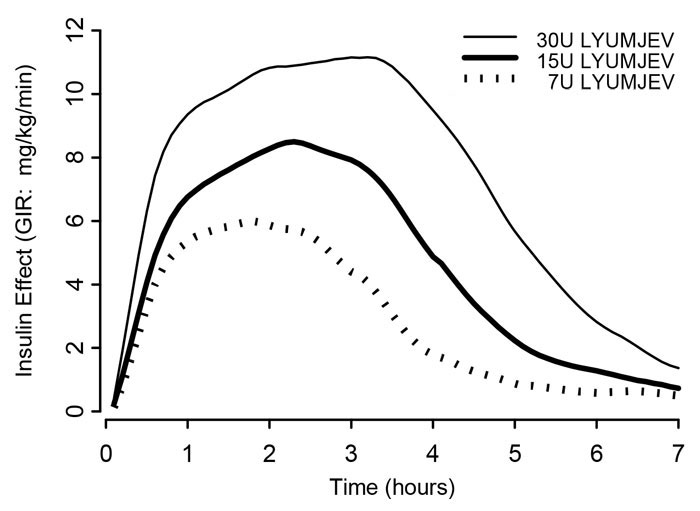
Figure 1. Mean Insulin Effect Over Time After Subcutaneous Administration of 7, 15, and 30 units of LYUMJEV in Healthy Subjects.
| Parameter for Insulin Effect | LYUMJEV 7 units |
LYUMJEV 15 units |
LYUMJEV 30 units |
| Time to first measurable effect | ~17 minutes | ~17 minutes | ~15 minutes |
| Time to peak effect | ~120 minutes | ~138 minutes | ~174 minutes |
| Time for effect to return to baseline | ~4.6 hours | ~6.2 hours | ~7.3 hours |
On average, the pharmacodynamic effects of LYUMJEV, measured as area under the glucose infusion rate-time curve (AUCGIR), was 1080 mg/kg, 1860 mg/kg, and 3030 mg/kg following administration of 7, 15, and 30 units of LYUMJEV in healthy subjects.
Similar pharmacodynamic profiles were observed in separate studies conducted in 40 patients with type 1 diabetes and 38 patients with type 2 diabetes given LYUMJEV subcutaneously as a single 15 unit dose.
The onset and total glucose lowering were similar when LYUMJEV was administered in the abdomen, deltoid, or thigh. The day-to-day variability [percent coefficient of variation (CV%)] within subjects in the glucose-lowering-effect of LYUMJEV was 24% for the early glucose lowering (AUCGIR, 0-1h), 27% for the total glucose lowering (AUCGIR, 0-10h), and 19% for maximum glucose lowering effect (GIRmax).
Postprandial Glucose Lowering
When given at the start of a meal or 20 minutes after the start of the meal, LYUMJEV reduced postprandial glucose during a standardized test meal over the complete 5-hour period [change from premeal AUC(0-5h)] in patients with type 1 or type 2 diabetes.
The maximum and total glucose lowering were comparable for a single 15 unit dose of LYUMJEV 200 units/mL or LYUMJEV 100 units/mL when administered subcutaneously to healthy subjects. The insulin time action profile with LYUMJEV 200 units/mL was the same as observed with LYUMJEV 100 units/mL.
12.3 Pharmacokinetics
Absorption
Absorption of insulin lispro-aabc was evaluated in healthy subjects (see Figure 2) and patients with diabetes following subcutaneous injection of LYUMJEV.
- Insulin lispro-aabc appeared in circulation approximately 1 minute after injection of LYUMJEV.
- Time to 50% maximum insulin lispro-aabc concentration was 13 minutes.
- Time to maximum insulin lispro-aabc concentration was achieved at 57 minutes.
In healthy subjects, the day-to-day variability [CV%] within subjects of LYUMJEV was 10% for total exposure (AUC, 0-10h) and 16% for maximum insulin lispro-aabc concentration (Cmax).
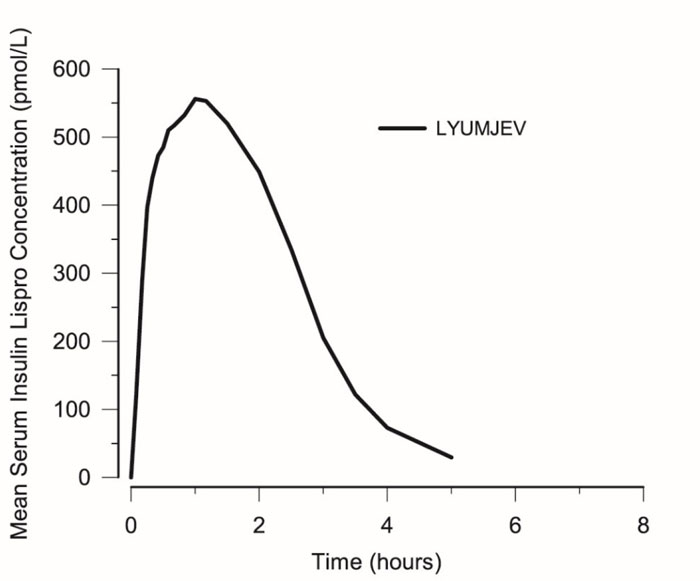
Figure 2. Mean Serum Insulin Lispro-aabc After Subcutaneous Injection of LYUMJEV (15 unit dose) in Healthy Subjects
The absolute bioavailability of insulin lispro-aabc after subcutaneous administration of LYUMJEV in the abdomen, deltoid, and thigh was approximately 65%. The rate of absorption of insulin lispro-aabc is maintained regardless of injection site. Maximum concentration and time to maximum concentration were comparable for the abdomen and upper arm regions; time to maximum concentration was longer and maximum concentration was lower for the thigh.
Total insulin lispro-aabc exposure and maximum insulin lispro-aabc concentration increased proportionally with increasing subcutaneous doses of LYUMJEV within the therapeutic dose range.
The results of a study in healthy subjects demonstrated that LYUMJEV 200 units/mL is bioequivalent to LYUMJEV 100 units/mL following administration of a single 15 unit dose for the area under the serum insulin lispro-aabc concentration-time curve from time zero to infinity and maximum insulin lispro-aabc concentration. The rate of insulin lispro-aabc absorption after administration of LYUMJEV 200 units/mL was similar as observed with LYUMJEV 100 units/mL.
Distribution
Following a 15 unit intravenous bolus injection of LYUMJEV in healthy subjects, the geometric mean (CV%) volume of distribution of insulin lispro-aabc (Vd) was 34 L (30%).
Elimination
Following a 15 unit intravenous bolus injection of LYUMJEV in healthy subjects, the geometric mean (CV%) clearance of insulin lispro-aabc was 32 L/hour (22%) and the median half-life of insulin lispro-aabc was 44 minutes.
Specific Populations
Age, biological sex, and race did not affect the pharmacokinetics and pharmacodynamics of LYUMJEV.
Patients with Renal and Hepatic Impairment
Renal and hepatic impairment is not known to impact the pharmacokinetics of insulin lispro-aabc. Insulin requirements may be reduced in the presence of renal or hepatic impairment.
12.6 Immunogenicity
The observed incidence of anti-drug antibodies is highly dependent on the sensitivity and specificity of the assay. Differences in assay methods preclude meaningful comparisons of the incidence of anti-drug antibodies in the studies described below with the incidence of anti-drug antibodies in other studies, including those of insulin lispro-aabc or of other insulin lispro products.
In a 26-week trial in adult patients with type 1 diabetes (Study PRONTO-T1D) [see Clinical Studies (14.2)], 49% of LYUMJEV-treated patients were anti-drug (insulin lispro-aabc) antibody (ADA)-positive at baseline, 91% of whom had cross-reactive antibodies with native insulin. During this 26-week period in this trial, 33% of LYUMJEV-treated patients had treatment-emergent ADA post-baseline (i.e., either new ADA or a 57% increase in assay signal over baseline), 75% of whom had cross-reactive antibodies with native insulin.
In a 26-week trial in adult patients with type 2 diabetes (Study PROTO-T2D) [see Clinical Studies (14.3)], 35% of LYUMJEV-treated patients were ADA-positive at baseline, 81% of whom had cross-reactive antibodies with native insulin. During this 26-week period in this trial, 31% of LYUMJEV-treated patients had treatment-emergent ADA post-baseline (i.e., either new ADA or a 57% increase in assay signal over baseline), 68% of whom had cross-reactive antibodies with native insulin.
In a 26-week trial in pediatric patients with type 1 diabetes (Study-PRONTO-PEDS) [see Clinical Studies (14.5)], 73% of LYUMJEV-treated patients were ADA-positive at baseline. Of these ADA-positive patients, 97% had cross-reactive antibodies with native insulin. During this 26-week period in this trial, 31% of LYUMJEV-treated patients had treatment-emergent ADA post-baseline (i.e., either new ADA or a 57% increase in assay signal over baseline). Of these treatment-emergent ADA-positive patients, 84% had cross-reactive antibodies with native insulin.
In these clinical trials, there were no identified clinically significant effects of ADA on safety or effectiveness (measured by HbA1c) of LYUMJEV over the treatment duration of 26-weeks.
13 NONCLINICAL TOXICOLOGY
13.1 Carcinogenesis, Mutagenesis, Impairment of Fertility
In Fischer 344 rats, a 12-month repeat-dose toxicity study was conducted with insulin lispro at subcutaneous doses of 20 and 200 units/kg/day (approximately 3 and 32 times the human subcutaneous dose of 1 unit/kg/day, based on units/body surface area). Insulin lispro did not produce important target organ toxicity including mammary tumors at any dose.
Insulin lispro was not mutagenic in the following genetic toxicity assays: bacterial mutation, unscheduled DNA synthesis, mouse lymphoma, chromosomal aberration, and micronucleus assays.
Male fertility was not compromised when male rats given subcutaneous insulin lispro injections of 5 and 20 units/kg/day (0.8 and 3 times the human subcutaneous dose of 1 unit/kg/day, based on units/body surface area) for 6 months were mated with untreated female rats. In a combined fertility, perinatal, and postnatal study in male and female rats given 1, 5, and 20 units/kg/day subcutaneously (0.2, 0.8, and 3 times the human subcutaneous dose of 1 unit/kg/day, based on units/body surface area), mating and fertility were not adversely affected in either gender at any dose.
14 CLINICAL STUDIES
14.1 Overview of Clinical Studies
The effectiveness of LYUMJEV was evaluated in:
- Two randomized, active controlled trials of 26 weeks in adults with type 1 diabetes (N=780) or type 2 diabetes (N=336) (PRONTO-T1D and PRONTO-T2D, respectively) [see Clinical Studies (14.2, 14.3)].
- A randomized, active controlled 16-week trial in adults with type 1 diabetes using continuous subcutaneous insulin infusion (N=432) (PRONTO-Pump-2) [see Clinical Studies (14.4)].
- A randomized, active controlled 26-week trial in pediatric patients with type 1 diabetes (N=716) (PRONTO-Peds) [see Clinical Studies (14.5)].
14.2 Adults with Type 1 Diabetes
PRONTO-T1D (NCT03214367) was a 26 week, randomized (4:4:3), active controlled, treat-to-target, multinational trial that evaluated the efficacy of LYUMJEV in 1222 adult patients with type 1 diabetes. Patients were randomized to either blinded mealtime LYUMJEV (N=451), blinded mealtime HUMALOG (N=442), or open-label postmeal LYUMJEV (N=329), all in combination with either insulin glargine or insulin degludec. Mealtime LYUMJEV or HUMALOG was injected 0 to 2 minutes before the meal and postmeal LYUMJEV was injected 20 minutes after the start of the meal.
Patients had a mean age of 44 years; mean duration of diabetes of 19 years; 56% were male; race: 77% White, 19% Asian, and 2% Black or African American. Eight percent of the randomized patients were Hispanic. The mean BMI was 26.6 kg/m2.
At week 26, treatment with mealtime LYUMJEV provided a mean reduction in HbA1c that met the pre-specified non-inferiority margin (0.4%) (see Table 8). In addition, postmeal LYUMJEV met the prespecified non-inferiority margin (0.4%) compared to mealtime HUMALOG. Insulin doses were similar in all treatment groups at baseline and at 26 weeks.
|
a Analysis population: all randomized subjects regardless of adherence to treatment or availability of post-baseline assessment. Missing data at Week 26 were imputed by return to baseline approach. At week 26, primary efficacy assessment was missing for 3.8%, 4.8%, and 5.2% of subjects, for mealtime LYUMJEV, mealtime HUMALOG, and postmeal LYUMJEV, respectively. |
|||
|
b Least-squares (LS) mean from ANCOVA adjusted for baseline value and other stratification factors. |
|||
|
c Tested for non-inferiority. |
|||
| Mealtime LYUMJEV + basal insulin | Mealtime HUMALOG + basal insulin | Postmeal LYUMJEV + basal insulin | |
| Number of randomized subjects (N) | 451 | 442 | 329 |
| HbA1c (%) (mean)a | |||
| Baseline | 7.3 | 7.3 | 7.4 |
| Adjusted mean change from baselineb | -0.12 | -0.04 | 0.1 |
| Estimated treatment difference versus HUMALOG [95% CI] |
-0.08 [-0.16, 0.00]c | 0.14 [0.05, 0.22] | |
14.3 Adults with Type 2 Diabetes
PRONTO-T2D (NCT03214380) was a 26-week, randomized (1:1), active controlled, treat-to-target, multinational trial that evaluated the efficacy of LYUMJEV in 673 adult patients with type 2 diabetes who at study entry were on multiple daily injections with either basal insulin and at least one prandial insulin injection or premixed insulin with at least two injections daily. Patients may also have been treated with up to three oral anti-diabetic medications (OAMs) in addition to insulin. Patients were allowed to continue on metformin and/or a SGLT2 inhibitor and were randomized to either mealtime LYUMJEV (N=336) or to mealtime HUMALOG (N=337), both in combination with insulin glargine or insulin degludec in a basal-bolus regimen. Mealtime LYUMJEV or mealtime HUMALOG was injected 0-2 minutes before the meal.
Patients had a mean age of 61 years; mean duration of diabetes of 17 years; 53% were male; race: 69% White, 24% Asian, and 5% Black or African American. Twenty-three percent of the randomized patients were Hispanic. The mean BMI was 32.3 kg/m2.
At week 26, treatment with mealtime LYUMJEV provided a mean reduction of HbA1c from baseline that met the pre-specified non-inferiority margin (0.4%) compared to mealtime HUMALOG (see Table 9). Insulin doses were similar in both treatment groups at baseline and at 26 weeks.
|
a Analysis population: all randomized subjects regardless of adherence to treatment or availability of post-baseline assessment. Missing data at Week 26 were imputed by return to baseline approach. At week 26, primary efficacy assessment was missing for 4.8% of subjects for mealtime LYUMJEV and for 4.5% mealtime HUMALOG. |
||
|
b Least-squares (LS) mean from ANCOVA adjusted for baseline value and other stratification factors. |
||
|
c Tested for non-inferiority. |
||
| Mealtime LYUMJEV + basal insulin | Mealtime HUMALOG + basal insulin | |
| Number of randomized subjects (N) | 336 | 337 |
| HbA1c (%)a | ||
| Baseline mean | 7.3 | 7.3 |
| Adjusted mean change from baselineb | -0.36 | -0.38 |
| Estimated treatment difference versus HUMALOG [95% CI]c |
0.03 [-0.08, 0.13] | |
14.4 Adults with Type 1 Diabetes – Continuous Subcutaneous Insulin Infusion (CSII)
PRONTO-Pump-2 (NCT03830281) was a 16 week randomized (1:1), active controlled, treat-to-target, multinational trial that evaluated the efficacy of LYUMJEV in 432 adult patients with type 1 diabetes currently using continuous subcutaneous insulin infusion. Patients were randomized to either blinded LYUMJEV (N=215) or blinded HUMALOG (N= 217). Mealtime LYUMJEV or HUMALOG boluses were initiated 0 to 2 minutes before the meal.
Patients had a mean age of 46 years; mean duration of diabetes of 26 years; 45% were male; race: 95% White, 3% Black or African American, and 0.5% Asian. Eight percent of the randomized patients were Hispanic. The mean BMI was 27.1 kg/m2.
At week 16, treatment with LYUMJEV provided a mean reduction in HbA1c that met the pre-specified non-inferiority margin (0.4%) compared to mealtime HUMALOG (see Table 10). Total daily insulin doses were similar for both treatment groups at baseline and at 16 weeks.
|
a Analysis population: all randomized subjects regardless of adherence to treatment or availability of post-baseline assessment. Missing data at Week 16 were imputed by return to baseline approach. At week 16, primary efficacy assessment was missing for 7% and 4.6% of subjects, for LYUMJEV and HUMALOG, respectively. |
||
|
b Least-squares (LS) mean from ANCOVA adjusted for baseline value and other stratification factors. |
||
|
c Tested for non-inferiority. |
||
| LYUMJEV | HUMALOG | |
| Number of randomized subjects (N) | 215 | 217 |
| HbA1c (%)a | ||
| Baseline mean | 7.6 | 7.5 |
| Adjusted mean change from baselineb | -0.06 | -0.09 |
| Estimated treatment difference versus HUMALOG [95% CI]c | 0.03 [-0.05, 0.11] | |
14.5 Pediatric Patients with Type 1 Diabetes
PRONTO-Peds (NCT03740919) was a 26-week, randomized (2:2:1), active controlled, treat-to-target, multinational trial that evaluated the efficacy of LYUMJEV in 716 pediatric patients with type 1 diabetes. Patients were randomized to either blinded mealtime LYUMJEV (N=280), blinded mealtime HUMALOG (N=298), or open-label postmeal LYUMJEV (N=138), all in combination with basal insulin (insulin glargine, insulin degludec or insulin detemir). Mealtime LYUMJEV or HUMALOG was injected 0 to 2 minutes before the meal and postmeal LYUMJEV was injected within 20 minutes after the start of the meal.
Patients had a mean age of 12 years (3-17 years); 51% were male; race: 89% White, 6% Asian, and 2% Black or African American. In the U.S. subpopulation in this trial, 24% of the randomized patients were Hispanic. The mean BMI was 20.4 kg/m2 and the mean duration of diabetes was 5 years.
At week 26, treatment with mealtime LYUMJEV provided a mean change in HbA1c that met the pre-specified non-inferiority margin (0.4%) (see Table 11). In addition, postmeal LYUMJEV met the prespecified non-inferiority margin (0.4%) compared to mealtime HUMALOG. Insulin doses were similar in all treatment groups at baseline and at 26 weeks.
|
a Analysis population: all randomized subjects regardless of adherence to treatment or availability of post-baseline assessment. Missing data at Week 26 were imputed by return to baseline approach. At week 26, primary efficacy assessment was missing for 5.4%, 7.1%, and 5.1% of subjects, for mealtime LYUMJEV, mealtime HUMALOG, and postmeal LYUMJEV, respectively. |
|||
|
b Least-squares (LS) mean from ANCOVA adjusted for baseline value and other stratification factors. |
|||
|
c Tested for non-inferiority. |
|||
| Mealtime LYUMJEV + basal insulin | Mealtime HUMALOG + basal insulin | Postmeal LYUMJEV + basal insulin | |
| Number of randomized subjects (N) | 280 | 298 | 138 |
| HbA1c (%) (mean) a | |||
| Baseline | 7.8 | 7.8 | 7.8 |
| Adjusted mean change from baselineb | 0.06 | 0.06 | 0.06 |
| Estimated treatment difference versus HUMALOG [95% CI]c |
-0.01 [-0.15, 0.14] | -0.00 [-0.18, 0.18] | |
16 HOW SUPPLIED/STORAGE AND HANDLING
16.1 How Supplied
LYUMJEV (insulin lispro-aabc) injection is a clear and colorless solution available as shown in Table 12.
|
a 3 mL cartridge is for use in Eli Lilly and Company's HumaPen® Luxura® HD insulin delivery device. Patients need to check their device manual to determine if the LYUMJEV cartridge is compatible for use in other devices. |
|||||
|
b Tempo Pen contains a component that allows for data connectivity when used with a compatible transmitter. |
|||||
| LYUMJEV | NDC Number | Concentration | Total Units in Presentation | Dose Increment | Package Size |
| U-100 multiple-dose 10 mL vial | 0002-7728-01 | 100 units/mL | 1,000 units | n/a | 1 vial |
| U-100 single-patient-use 3 mL cartridgea | 0002-7726-05 | 100 units/mL | 300 units | n/a | 5 cartridges |
| U-100 single-patient-use 3 mL KwikPen | 0002-8207-05 | 100 units/mL | 300 units | 1 unit | 5 pens |
| U-100 single-patient-use 3 mL Junior KwikPen | 0002-8351-05 | 100 units/mL | 300 units | 0.5 unit | 5 pens |
| U-100 single-patient-use 3 mL Tempo Penb | 0002-8235-05 | 100 units/mL | 300 units | 1 unit | 5 pens |
| U-200 single-patient-use 3 mL KwikPen | 0002-8228-27 | 200 units/mL | 600 units | 1 unit | 2 pens |
16.2 Storage and Handling
- Dispense in the original sealed carton with the enclosed Instructions for Use.
- Refrigerate unopened LYUMJEV vials, pens, and cartridges between 36°F to 46°F (2°C to 8°C) until time of use and keep in the original carton to protect from light. Do not freeze or use LYUMJEV if it has been frozen. Do not expose to direct heat. Discard opened or unopened LYUMJEV vials, pens, and cartridges stored at room temperature below 86°F (30°C) after 28 days.
The storage conditions for vials, pens, and cartridges are summarized in Table 13.
|
a In-use (opened) vials, whether or not refrigerated, must be used within 28 days. |
||||
|
b When stored at room temperature, LYUMJEV can only be used for a total of 28 days including both not in-use (unopened) and in-use (opened) storage time. |
||||
| LYUMJEV Presentation | Not In-use (Unopened) |
In-use (Opened) |
||
| Room Temperature (below 86°F [30°C]) |
Refrigerated (36°F to 46°F [2°C to 8°C]) |
Room Temperature (below 86°F [30°C]) | Refrigerated (36°F to 46°F [2°C to 8°C]) |
|
| 10 mL viala,b | 28 days | Until expiration date | 28 days | 28 days |
| 3 mL cartridgeb | 28 days | Until expiration date | 28 days | Do not refrigerate |
| 3 mL LYUMJEV KwikPen (U-100 and U-200)b | 28 days | Until expiration date | 28 days | Do not refrigerate |
| 3 mL LYUMJEV Junior KwikPenb | 28 days | Until expiration date | 28 days | Do not refrigerate |
| 3 mL LYUMJEV Tempo Penb | 28 days | Until expiration date | 28 days | Do not refrigerate |
Storage of LYUMJEV in Insulin Pump
Change the LYUMJEV U-100 in the pump reservoir at least every 9 days, or according to the pump user manual, whichever is shorter, or after exposure to temperatures that exceed 98.6°F (37°C).
Storage of LYUMJEV in Intravenous Infusion Fluids
Diluted LYUMJEV may be stored for up to 4 days when refrigerated at 36°F to 46°F (2°C to 8°C) until time of use. The same solution may be stored up to 12 hours at room temperature at 68°F to 77°F (20°C to 25°C) [see Dosage and Administration (2.2)].
17 PATIENT COUNSELING INFORMATION
Advise the patient to read the FDA-Approved Patient Labeling (Patient Information and Instructions for Use).
Never Share a LYUMJEV Prefilled Pen, Cartridge, or Syringe Between Patients
Advise patients that they must never share a LYUMJEV prefilled pen or cartridge with another person, even if the needle is changed. Advise patients using LYUMJEV vials not to share needles or syringes with another person. Sharing poses a risk for transmission of blood-borne pathogens [see Warnings and Precautions (5.1)].
Hyperglycemia or Hypoglycemia
Inform patients that hypoglycemia is the most common adverse reaction with insulin. Instruct patients on self-management procedures including glucose monitoring, proper injection technique, and management of hypoglycemia and hyperglycemia, especially at initiation of LYUMJEV therapy. Instruct patients on handling of special situations such as intercurrent conditions (illness, stress, or emotional disturbances), an inadequate or skipped insulin dose, inadvertent administration of an increased insulin dose, inadequate food intake, and skipped meals. Instruct patients on the management of hypoglycemia.
Inform patients that their ability to concentrate and react may be impaired as a result of hypoglycemia. Advise patients who have frequent hypoglycemia or reduced or absent warning signs of hypoglycemia to use caution when driving or operating machinery [see Warnings and Precautions (5.3)].
Advise patients that changes in insulin regimen can predispose to hyperglycemia or hypoglycemia and that changes in insulin regimen should be made under close medical supervision [see Warnings and Precautions (5.2)].
Hypoglycemia due to Medication Errors
Instruct patients to always check the insulin label before each injection to avoid mix-ups between insulin products.
Inform patients that LYUMJEV U-200 contains 2 times as much insulin per mL as LYUMJEV U-100. The LYUMJEV U-200 KwikPen dose window shows the number of units of LYUMJEV U-200 to be injected so no dose conversion is required [see Dosage and Administration (2.1)].
Instruct patients to not transfer LYUMJEV U-200 from the LYUMJEV U-200 KwikPen to a syringe [see Warnings and Precautions (5.4)].
Hypersensitivity Reactions
Advise patients that hypersensitivity reactions have occurred with LYUMJEV. Inform patients on the symptoms of hypersensitivity reactions [see Warnings and Precautions (5.6)].
Instructions for Patients Using Continuous Subcutaneous Infusion (Insulin Pump)
- Do not use LYUMJEV U-200 in an insulin pump.
- Train patients in intensive insulin therapy with multiple injections and in the function of their pump and pump accessories.
- Instruct patients to follow healthcare provider recommendations when setting pump basal rates and bolus settings.
- Refer to the continuous subcutaneous infusion pump user manual to see if LYUMJEV can be used with the pump. See recommended reservoir and infusion sets in the insulin pump user manual.
- Instruct patients to replace insulin in the reservoir at least every 9 days, or according to the pump user manual whichever is shorter. By following this schedule, patients avoid insulin degradation, infusion set occlusion, and loss of the insulin preservative.
- Instruct patients to discard insulin exposed to temperatures higher than 98.6°F (37°C).
- Instruct patients to inform healthcare provider and select a new site for infusion if infusion site becomes erythematous, pruritic, or thickened.
- Instruct patients on the risk of rapid hyperglycemia and ketosis due to pump malfunction, infusion set occlusion, leakage, disconnection or kinking, and degraded insulin. Instruct patients on the risk of hypoglycemia from pump malfunction. If these problems cannot be promptly corrected, instruct patients to resume therapy with subcutaneous insulin injection and contact their healthcare provider [see Warnings and Precautions (5) and How Supplied/Storage and Handling (16.2)].
Eli Lilly and Company, Indianapolis, IN 46285, USA
US License No. 1891
Copyright © 2020, 2022, Eli Lilly and Company. All rights reserved.
LUM-0003-USPI-20221014
|
This Patient Information has been approved by the U.S. Food and Drug Administration |
Revised: October 2022 |
|
| Patient Information LYUMJEV® (LOOM-jehv) (insulin lispro-aabc) injection, for subcutaneous or intravenous use |
||
| Do not share your LYUMJEV with other people, even if the needle has been changed. You may give other people a serious infection, or get a serious infection from them. | ||
What is LYUMJEV?
|
||
Do not take LYUMJEV if you:
|
||
Before taking LYUMJEV, tell your healthcare provider about all of your medical conditions, including if you:
|
||
| Tell your healthcare provider about all the medicines you take, including prescription and over-the-counter medicines, vitamins, and herbal supplements. Before you start taking LYUMJEV, talk to your healthcare provider about low blood sugar and how to manage it. |
||
How should I take LYUMJEV?
|
||
| Keep LYUMJEV and all medicines out of the reach of children. | ||
| Your dose of LYUMJEV may need to change because of: a change in level of physical activity or exercise, weight gain or loss, increased stress, illness, change in diet, or because of other medicines you take. |
||
| What should I avoid while taking LYUMJEV? While taking LYUMJEV do not:
|
||
| What are the possible side effects of LYUMJEV? LYUMJEV may cause serious side effects that can lead to death, including:
|
||
Get emergency medical help if you have:
|
||
| The most common side effects of LYUMJEV include: |
||
|
|
|
|
||
| These are not all the possible side effects of LYUMJEV. Call your doctor for medical advice about side effects. You may report side effects to FDA at 1-800-FDA-1088. | ||
| General information about the safe and effective use of LYUMJEV. Medicines are sometimes prescribed for purposes other than those listed in a Patient Information leaflet. Do not take LYUMJEV for a condition for which it was not prescribed. Do not give LYUMJEV to other people, even if they have the same symptoms that you have. It may harm them. You can ask your pharmacist or healthcare provider for information about LYUMJEV that is written for health professionals. |
||
| What are the ingredients in LYUMJEV? Active ingredient: insulin lispro-aabc Inactive ingredients: glycerol, magnesium chloride hexahydrate, metacresol, sodium citrate dihydrate, treprostinil sodium, zinc oxide (zinc ion), and Water for Injection, USP |
||
| LYUMJEV® is a registered trademark of Eli Lilly and Company. Eli Lilly and Company Indianapolis, IN 46285, USA US License Number 1891 Copyright © 2020, 2022, Eli Lilly and Company. All rights reserved. For more information, go to www.lilly.com or call 1-800-545-5979. |
||
LUM-0003-PPI-20221014
Instructions for Use
LYUMJEV™ (LOOM-jehv)
(insulin lispro-aabc) injection
for subcutaneous use
(100 units/mL, 10 mL multiple-dose vial)
Read the Instructions for Use before you start taking LYUMJEV and each time you get a new vial. There may be new information. This information does not take the place of talking to your healthcare provider about your medical condition or your treatment.
Do not share your syringes or needles with other people. You may give other people a serious infection or get a serious infection from them.
Supplies needed to give your injection
- a multiple-dose LYUMJEV vial
- a U-100 insulin syringe and needle (Becton, Dickinson and Company syringes and needles recommended)
- 2 alcohol swabs
- gauze (optional)
- 1 sharps container for throwing away used syringes and needles. See “Disposing of used syringes and needles” at the end of these instructions.
| Vial | Syringe |
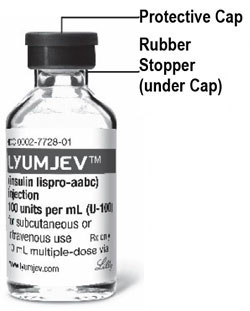 |
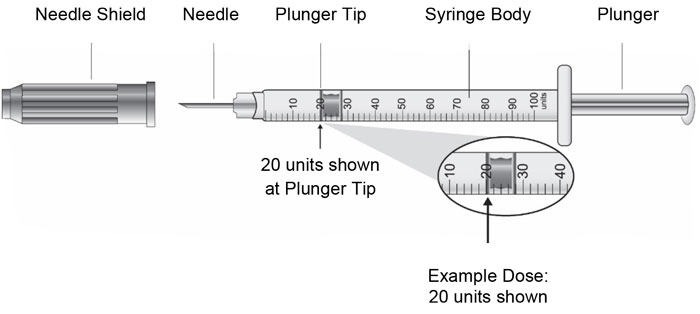 |
Preparing your LYUMJEV dose
- Wash your hands with soap and water.
- Check the LYUMJEV label to make sure you are taking the right type of insulin. This is especially important if you use more than 1 type of insulin.
- LYUMJEV should look clear and colorless. Do not use LYUMJEV if it is thick, cloudy, or colored, or if you see lumps or particles in it.
- Do not use LYUMJEV past the expiration date printed on the label or 28 days after you first use it.
- Always use a new syringe and needle for each injection to prevent infections and blocked needles.
- Do not mix LYUMJEV U-100 with other insulins.
Giving your LYUMJEV injection with a syringe
- Inject your insulin exactly as your healthcare provider has shown you. Your healthcare provider should tell you if you should pinch the skin before injecting.
- LYUMJEV starts acting fast, so give your injection at the start of a meal or within 20 minutes after you start a meal.
- Change (rotate) your injection sites within the area you choose for each dose to reduce your risk of getting lipodystrophy (pits in skin or thickened skin) and localized cutaneous amyloidosis (skin with lumps) at the injection sites.
- Do not use the exact same spot for each injection.
- Do not inject where the skin has pits, is thickened, or has lumps.
- Do not inject where the skin is tender, bruised, scaly or hard, or into scars or damaged skin.
Giving your LYUMJEV using an insulin pump
- If you have been prescribed an insulin pump, check the pump manufacturer's user manual to see if LYUMJEV can be used with the pump.
- LYUMJEV should be given into an area of your body recommended in the instructions that come with your insulin pump.
- Change LYUMJEV in the pump reservoir at least every 9 days or according to the pump user manual, whichever is shorter, even if you have not used all of the insulin.
- Change (rotate) your insertion sites within the area you choose for each insertion to reduce your risk of getting lipodystrophy (pits in skin or thickened skin) and localized cutaneous amyloidosis (skin with lumps) at the insertion sites. Do not insert into the exact same spot for each insertion. Do not insert where the skin has pits, is thickened, or has lumps. Do not insert where the skin is tender, bruised, scaly or hard, or into scars or damaged skin.
- Call your healthcare provider and choose a new infusion site if the skin at the infusion site becomes red, itchy, or thickened.
- Your healthcare provider should provide recommendations for appropriate pump basal and meal-time infusion rates. Call your healthcare provider if you have any questions about using the insulin pump.
- Do not dilute or mix LYUMJEV with any other type of insulin in your insulin pump.
- You should be trained on how to give insulin by injection and have an alternative insulin delivery system in case of pump failure.
Disposing of used syringes and needles
- Put your used syringes and needles in a FDA-cleared sharps disposal container right away after use. Do not throw away (dispose of) loose syringes and needles in your household trash.
- If you do not have a FDA-cleared sharps disposal container, you may use a household container that is:
- –
- made of a heavy-duty plastic,
- –
- can be closed with a tight-fitting, puncture-resistant lid, without sharps being able to come out,
- –
- upright and stable during use,
- –
- leak-resistant, and
- –
- properly labeled to warn of hazardous waste inside the container.
- When your sharps disposal container is almost full, you will need to follow your community guidelines for the right way to dispose of your sharps disposal container. There may be state or local laws about how you should throw away used syringes and needles. For more information about safe sharps disposal, and for specific information about sharps disposal in the state that you live in, go to the FDA's website at: http://www.fda.gov/safesharpsdisposal.
- Do not dispose of your used sharps disposal container in your household trash unless your community guidelines permit this. Do not recycle your used sharps disposal container.
How should I store LYUMJEV?
All not in-use (unopened) vials:
- Store all not in-use (unopened) vials in the refrigerator at 36°F to 46°F (2°C to 8°C).
- Do not freeze. Do not use if LYUMJEV has been frozen.
- Keep away from direct heat and light.
- Not in-use (unopened) vials can be used until the expiration date on the carton and label, if they have been stored in the refrigerator.
- Not in-use (unopened) vials should be thrown away after 28 days, if they are stored at room temperature.
After vials have been in-use (opened):
- Store in-use (opened) vials in the refrigerator or at room temperature below 86°F (30°C) for up to 28 days.
- Keep vials away from direct heat and light.
- Throw away all in-use (opened) vials after 28 days of use, even if there is insulin left in the vial.
LYUMJEV in an insulin pump:
- Throw away LYUMJEV in the pump reservoir if it has been exposed to temperatures higher than 98.6°F (37°C).
Keep LYUMJEV vials, syringes, needles and all medicines out of the sight and reach of children.
If you have any questions or problems with your LYUMJEV, contact Lilly at 1-800-Lilly-Rx (1-800-545-5979) or call your healthcare provider for help. For more information on LYUMJEV and insulin, go to www.lyumjev.com.
Scan this code to launch
www.lyumjev.com
Manufactured by:
Eli Lilly and Company
Indianapolis, IN 46285, USA
US License Number 1891
LYUMJEV™ is a trademark of Eli Lilly and Company.
Copyright © 2020, 2021, Eli Lilly and Company. All rights reserved.
This Instructions for Use has been approved by the U.S. Food and Drug Administration.
Revised: August 2021
LUMVL-0002-IFU-20210813
Instructions for Use
LYUMJEV™ KwikPen®(LOOM-jehv)
(insulin lispro-aabc)
injection, for subcutaneous use
3 mL single-patient-use pen
100 units/mL
Read the Instructions for Use before you start taking LYUMJEV™ and each time you get another LYUMJEV KwikPen. There may be new information. This information does not take the place of talking to your healthcare provider about your medical condition or your treatment.
Do not share your LYUMJEV KwikPen with other people, even if the needle has been changed. Do not reuse or share needles with other people. You may give other people a serious infection or get a serious infection from them.
LYUMJEV KwikPen (“Pen”) is a disposable single-patient-use prefilled pen containing 300 units of LYUMJEV.
- Your healthcare provider will tell you how many units to give as your dose and how to inject your prescribed dose of insulin.
- You can give yourself more than 1 dose from the Pen.
- Each turn of the dose knob dials 1 unit of insulin. You can give from 1 to 60 units in a single injection.
- If your dose is more than 60 units, you will need to give yourself more than 1 injection. Always check the number in the dose window to make sure you dialed the correct dose.
- The plunger only moves a little with each injection, and you may not notice that it moves. The plunger will only reach the end of the cartridge when you have used all 300 units in the Pen.
People who are blind or have vision problems should not use the Pen without help from a person trained to use the Pen.
How to recognize your LYUMJEV KwikPen
|
Taupe |
|
Blue, with raised ridges on side |
|
Blue and white |
Supplies needed to give your injection
- LYUMJEV KwikPen, 100 units/mL
- KwikPen compatible needle (Becton, Dickinson and Company Pen needles recommended)
- Alcohol swab
- Gauze (optional)
Preparing your Pen
- Wash your hands with soap and water.
- Check the Pen to make sure you are taking the right type of insulin. This is especially important if you use more than 1 type of insulin.
- Do not use your Pen past the expiration date printed on the label or for more than 28 days after you first start using the Pen.
- Always use a new needle for each injection to help prevent infections and blocked needles.
Priming your Pen
Prime before each injection.
- Priming your Pen means removing the air from the needle and cartridge that may collect during normal use and ensures that your Pen is working correctly.
- If you do not prime before each injection, you may get too much or too little insulin.
Selecting your dose
- You can give from 1 to 60 units in a single injection.
- If your dose is more than 60 units, you will need to give more than 1 injection.
- –
- If you need help with dividing up your dose the right way, ask your healthcare provider.
- –
- Use a new needle for each injection and repeat the priming steps.
- The Pen will not let you dial more than the number of units left in the Pen.
- If you need to inject more than the number of units left in the Pen, you may either:
- –
- inject the amount left in your Pen and then use a new Pen to give the rest of your dose,
or - –
- get a new Pen and inject the full dose.
- It is normal to see a small amount of insulin left in the Pen that you cannot inject.
Giving your injection
- Inject your insulin as your healthcare provider has shown you.
- Change (rotate) your injection sites within the area you choose for each dose to reduce your risk of getting lipodystrophy (pits in skin or thickened skin) and localized cutaneous amyloidosis (skin with lumps) at the injection sites.
- Do not use the exact same spot for each injection.
- Do not inject where the skin has pits, is thickened, or has lumps.
- Do not inject where the skin is tender, bruised, scaly or hard, or into scars or damaged skin.
- Do not try to change your dose while injecting.
After your injection
Step 13:
|
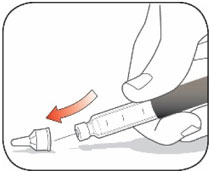 |
Step 14:
|
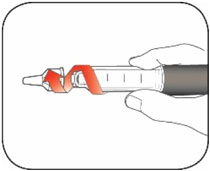 |
Step 15:
|
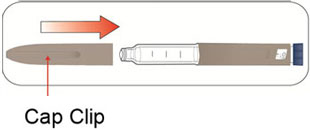 |
- Put your used needles in a FDA-cleared sharps disposal container right away after use. Do not throw away (dispose of) loose needles in your household trash.
- If you do not have a FDA-cleared sharps disposal container, you may use a household container that is:
- –
- made of a heavy-duty plastic,
- –
- can be closed with a tight-fitting, puncture-resistant lid, without sharps being able to come out,
- –
- upright and stable during use,
- –
- leak-resistant, and
- –
- properly labeled to warn of hazardous waste inside the container.
- When your sharps disposal container is almost full, you will need to follow your community guidelines for the right way to dispose of your sharps disposal container. There may be state or local laws about how you should throw away used needles and syringes. For more information about safe sharps disposal, and for specific information about sharps disposal in the state that you live in, go to the FDA's website at: http://www.fda.gov/safesharpsdisposal
- Do not dispose of your used sharps disposal container in your household trash unless your community guidelines permit this. Do not recycle your used sharps disposal container.
- The used Pen may be discarded in your household trash after you have removed the needle.
Storing your Pen
Unused Pens
- Store unused Pens in the refrigerator at 36°F to 46°F (2°C to 8°C).
- Do not freeze LYUMJEV. Do not use if it has been frozen.
- Unused Pens may be used until the expiration date printed on the label if the Pen has been kept in the refrigerator.
In-use Pen
- Store the Pen you are currently using at room temperature [up to 86°F (30°C)]. Keep away from heat and light.
- Throw away the LYUMJEV KwikPen you are using after 28 days, even if it still has insulin left in it.
General information about the safe and effective use of your Pen
- Keep your Pen and needles out of the sight and reach of children.
- Do not use your Pen if any part looks broken or damaged.
- Always carry an extra Pen in case yours is lost or damaged.
Troubleshooting
- If you cannot remove the Pen cap, gently twist the cap back and forth, and then pull the cap straight off.
- If the dose knob is hard to push:
- –
- pushing the dose knob more slowly will make it easier to inject.
- –
- your needle may be blocked. Put on a new needle and prime the Pen.
- –
- you may have dust, food, or liquid inside the Pen. Throw the Pen away and get a new Pen.
If you have any questions or problems with your LYUMJEV KwikPen, contact Lilly at 1-800-545-5979 or call your healthcare provider for help. For more information on LYUMJEV KwikPen and insulin, go to www.lyumjev.com.
Scan this code to launch
www.lyumjev.com
This Instructions for Use has been approved by the U.S. Food and Drug Administration.
Manufactured by:
Eli Lilly and Company
Indianapolis, IN 46285, USA
US License Number 1891
LYUMJEV™ and LYUMJEV™ KwikPen® are trademarks of Eli Lilly and Company.
Copyright © 2020, Eli Lilly and Company. All rights reserved.
| LYUMJEV KwikPen meets the current dose accuracy and functional requirements of ISO 11608-1. |
Issued: June 2020
LUMKP-0001-IFU-20200615
Instructions for Use
LYUMJEV™ Junior KwikPen®(LOOM-jehv)
(insulin lispro-aabc)
injection, for subcutaneous use
3 mL single-patient-use pen
100 units/mL
Read the Instructions for Use before you start taking LYUMJEV™ and each time you get another LYUMJEV Junior KwikPen. There may be new information. This information does not take the place of talking to your healthcare provider about your medical condition or your treatment.
Do not share your LYUMJEV Junior KwikPen with other people, even if the needle has been changed. Do not reuse or share needles with other people. You may give other people a serious infection or get a serious infection from them.
LYUMJEV Junior KwikPen (“Pen”) is a disposable single-patient-use prefilled pen containing 300 units of LYUMJEV.
- Your healthcare provider will tell you how many units to give as your dose and how to inject your prescribed dose of insulin.
- You can give yourself more than 1 dose from the Pen.
- Each turn of the dose knob dials 0.5 (½) unit of insulin. You can give from 0.5 (½) to 30 units in a single injection.
- If your dose is more than 30 units, you will need to give yourself more than 1 injection. Always check the number in the dose window to make sure you dialed the correct dose.
- The plunger only moves a little with each injection, and you may not notice that it moves. The plunger will only reach the end of the cartridge when you have used all 300 units in the Pen.
People who are blind or have vision problems should not use the Pen without help from a person trained to use the Pen.
How to recognize your LYUMJEV Junior KwikPen
|
Taupe |
|
Peach, with raised ridges on end and side |
|
White with a peach color bar, and peach, light blue and dark blue color band |
Supplies needed to give your injection
- LYUMJEV Junior KwikPen, 100 units/mL
- KwikPen compatible needle (Becton, Dickinson and Company Pen needles recommended)
- Alcohol swab
- Gauze (optional)
Preparing your Pen
- Wash your hands with soap and water.
- Check the Pen to make sure you are taking the right type of insulin. This is especially important if you use more than 1 type of insulin.
- Do not use your Pen past the expiration date printed on the label or for more than 28 days after you first start using the Pen.
- Always use a new needle for each injection to help prevent infections and blocked needles.
Priming your Pen
Prime before each injection.
- Priming your Pen means removing the air from the needle and cartridge that may collect during normal use and ensures that your Pen is working correctly.
- If you do not prime before each injection, you may get too much or too little insulin.
Selecting your dose
- You can give from 0.5 (½) to 30 units in a single injection.
- If your dose is more than 30 units, you will need to give more than 1 injection.
- –
- If you need help with dividing up your dose the right way, ask your healthcare provider.
- –
- Use a new needle for each injection and repeat the priming steps.
- –
- If you usually need more than 30 units, ask your healthcare provider if a different LYUMJEV Pen would be better for you.
- The Pen will not let you dial more than the number of units left in the Pen.
- If you need to inject more than the number of units left in the Pen, you may either:
- –
- inject the amount left in your Pen and then use a new Pen to give the rest of your dose,
or - –
- get a new Pen and inject the full dose.
- It is normal to see a small amount of insulin left in the Pen that you cannot inject.
Giving your injection
- Inject your insulin as your healthcare provider has shown you.
- Change (rotate) your injection sites within the area you choose for each dose to reduce your risk of getting lipodystrophy (pits in skin or thickened skin) and localized cutaneous amyloidosis (skin with lumps) at the injection sites.
- Do not use the exact same spot for each injection.
- Do not inject where the skin has pits, is thickened, or has lumps.
- Do not inject where the skin is tender, bruised, scaly or hard, or into scars or damaged skin.
- Do not try to change your dose while injecting.
After your injection
Step 13:
|
 |
Step 14:
|
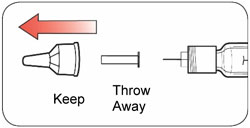 |
Step 15:
|
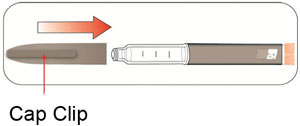 |
- Put your used needles in a FDA-cleared sharps disposal container right away after use. Do not throw away (dispose of) loose needles in your household trash.
- If you do not have a FDA-cleared sharps disposal container, you may use a household container that is:
- –
- made of a heavy-duty plastic,
- –
- can be closed with a tight-fitting, puncture-resistant lid, without sharps being able to come out,
- –
- upright and stable during use,
- –
- leak-resistant, and
- –
- properly labeled to warn of hazardous waste inside the container.
- When your sharps disposal container is almost full, you will need to follow your community guidelines for the right way to dispose of your sharps disposal container. There may be state or local laws about how you should throw away used needles and syringes. For more information about safe sharps disposal, and for specific information about sharps disposal in the state that you live in, go to the FDA's website at: http://www.fda.gov/safesharpsdisposal
- Do not dispose of your used sharps disposal container in your household trash unless your community guidelines permit this. Do not recycle your used sharps disposal container.
- The used Pen may be discarded in your household trash after you have removed the needle.
Storing your Pen
Unused Pens
- Store unused Pens in the refrigerator at 36°F to 46°F (2°C to 8°C).
- Do not freeze LYUMJEV. Do not use if it has been frozen.
- Unused Pens may be used until the expiration date printed on the label if the Pen has been kept in the refrigerator.
In-use Pen
- Store the Pen you are currently using at room temperature [up to 86°F (30°C)]. Keep away from heat and light.
- Throw away the LYUMJEV Junior KwikPen you are using after 28 days, even if it still has insulin left in it.
General information about the safe and effective use of your Pen
- Keep your Pen and needles out of the sight and reach of children.
- Do not use your Pen if any part looks broken or damaged.
- Always carry an extra Pen in case yours is lost or damaged.
Troubleshooting
- If you cannot remove the Pen cap, gently twist the cap back and forth, and then pull the cap straight off.
- If the dose knob is hard to push:
- –
- pushing the dose knob more slowly will make it easier to inject.
- –
- your needle may be blocked. Put on a new needle and prime the Pen.
- –
- you may have dust, food, or liquid inside the Pen. Throw the Pen away and get a new Pen.
If you have any questions or problems with your LYUMJEV Junior KwikPen, contact Lilly at 1-800-545-5979 or call your healthcare provider for help. For more information on LYUMJEV Junior KwikPen and insulin, go to www.lyumjev.com.
Scan this code to launch
www.lyumjev.com
This Instructions for Use has been approved by the U.S. Food and Drug Administration.
Manufactured by:
Eli Lilly and Company
Indianapolis, IN 46285, USA
US License Number 1891
LYUMJEV™ and LYUMJEV™ Junior KwikPen® are trademarks of Eli Lilly and Company.
Copyright © 2020, Eli Lilly and Company. All rights reserved.
| LYUMJEV Junior KwikPen meets the current dose accuracy and functional requirements of ISO 11608-1. |
Issued: June 2020
LUMJRKP-0001-IFU-20200615
Instructions for Use
LYUMJEV™ Tempo Pen™ (LOOM-jehv)
(insulin lispro-aabc)
injection, for subcutaneous use
3 mL single-patient-use pen
100 units/mL
Read the Instructions for Use before you start taking LYUMJEV™ and each time you get another LYUMJEV Tempo Pen. There may be new information. This information does not take the place of talking to your healthcare provider about your medical condition or your treatment.
Do not share your LYUMJEV Tempo Pen with other people, even if the needle has been changed. Do not reuse or share needles with other people. You may give other people a serious infection or get a serious infection from them.
LYUMJEV Tempo Pen (“Pen”) is a disposable single-patient-use prefilled pen containing 300 units of LYUMJEV.
- Your healthcare provider will tell you how many units to give as your dose and how to inject your prescribed dose of insulin.
- You can give yourself more than 1 dose from the Pen.
- Each turn of the dose knob dials 1 unit of insulin. You can give from 1 to 60 units in a single injection.
- If your dose is more than 60 units, you will need to give yourself more than 1 injection. Always check the number in the dose window to make sure you dialed the correct dose.
- The plunger only moves a little with each injection, and you may not notice that it moves. The plunger will only reach the end of the cartridge when you have used all 300 units in the Pen.
- This LYUMJEV Tempo Pen contains a component that allows for data connectivity when used with a compatible transmitter.
People who are blind or have vision problems should not use the Pen without help from a person trained to use the Pen.
How to recognize your LYUMJEV Tempo Pen
|
Taupe |
|
Blue, with raised ridges around the entire side |
|
Blue and white |
Supplies needed to give your injection
- LYUMJEV Tempo Pen, 100 units/mL
- Tempo Pen compatible needle (Becton, Dickinson and Company Pen needles recommended)
- Alcohol swab
- Gauze (optional)
Preparing your Pen
- Wash your hands with soap and water.
- Check the Pen to make sure you are taking the right type of insulin. This is especially important if you use more than 1 type of insulin.
- Do not use your Pen past the expiration date printed on the label or for more than 28 days after you first start using the Pen.
- Always use a new needle for each injection to help prevent infections and blocked needles.
Priming your Pen
Prime before each injection.
- Priming your Pen means removing the air from the needle and cartridge that may collect during normal use and ensures that your Pen is working correctly.
- If you do not prime before each injection, you may get too much or too little insulin.
Selecting your dose
- You can give from 1 to 60 units in a single injection.
- If your dose is more than 60 units, you will need to give more than 1 injection.
- –
- If you need help with dividing up your dose the right way, ask your healthcare provider.
- –
- Use a new needle for each injection and repeat the priming steps.
- The Pen will not let you dial more than the number of units left in the Pen.
- If you need to inject more than the number of units left in the Pen, you may either:
- –
- inject the amount left in your Pen and then use a new Pen to give the rest of your dose,
or - –
- get a new Pen and inject the full dose.
- It is normal to see a small amount of insulin left in the Pen that you cannot inject.
Giving your injection
- Inject your insulin as your healthcare provider has shown you.
- Change (rotate) your injection sites within the area you choose for each dose to reduce your risk of getting lipodystrophy (pits in skin or thickened skin) and localized cutaneous amyloidosis (skin with lumps) at the injection sites.
- Do not use the exact same spot for each injection.
- Do not inject where the skin has pits, is thickened, or has lumps.
- Do not inject where the skin is tender, bruised, scaly or hard, or into scars or damaged skin.
- Do not try to change your dose while injecting.
After your injection
Step 13:
|
 |
Step 14:
|
 |
Step 15:
|
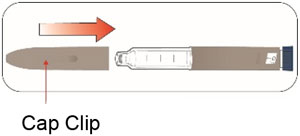 |
- Put your used needles in a FDA-cleared sharps disposal container right away after use. Do not throw away (dispose of) loose needles in your household trash.
- If you do not have a FDA-cleared sharps disposal container, you may use a household container that is:
- –
- made of a heavy-duty plastic,
- –
- can be closed with a tight-fitting, puncture-resistant lid, without sharps being able to come out,
- –
- upright and stable during use,
- –
- leak-resistant, and
- –
- properly labeled to warn of hazardous waste inside the container.
- When your sharps disposal container is almost full, you will need to follow your community guidelines for the right way to dispose of your sharps disposal container. There may be state or local laws about how you should throw away used needles and syringes. For more information about safe sharps disposal, and for specific information about sharps disposal in the state that you live in, go to the FDA's website at: http://www.fda.gov/safesharpsdisposal
- Do not dispose of your used sharps disposal container in your household trash unless your community guidelines permit this. Do not recycle your used sharps disposal container.
- The used Pen may be discarded in your household trash after you have removed the needle.
Storing your Pen
Unused Pens
- Store unused Pens in the refrigerator at 36°F to 46°F (2°C to 8°C).
- Do not freeze LYUMJEV. Do not use if it has been frozen.
- Unused Pens may be used until the expiration date printed on the label if the Pen has been kept in the refrigerator.
In-use Pen
- Store the Pen you are currently using at room temperature [up to 86°F (30°C)]. Keep away from heat and light.
- Throw away the LYUMJEV Tempo Pen you are using after 28 days, even if it still has insulin left in it.
General information about the safe and effective use of your Pen
- Keep your Pen and needles out of the sight and reach of children.
- Do not use your Pen if any part looks broken or damaged.
- Always carry an extra Pen in case yours is lost or damaged.
Troubleshooting
- If you cannot remove the Pen cap, gently twist the cap back and forth, and then pull the cap straight off.
- If the dose knob is hard to push:
- –
- pushing the dose knob more slowly will make it easier to inject.
- –
- your needle may be blocked. Put on a new needle and prime the Pen.
- –
- you may have dust, food, or liquid inside the Pen. Throw the Pen away and get a new Pen.
If you have any questions or problems with your LYUMJEV Tempo Pen, contact Lilly at 1-800-545-5979 or call your healthcare provider for help. For more information on LYUMJEV Tempo Pen and insulin, go to www.lyumjev.com.
Scan this code to launch
www.lyumjev.com
This Instructions for Use has been approved by the U.S. Food and Drug Administration.
Manufactured by:
Eli Lilly and Company
Indianapolis, IN 46285, USA
US License Number 1891
LYUMJEV™ and LYUMJEV™ Tempo Pen™ are trademarks of Eli Lilly and Company.
Copyright © 2020, Eli Lilly and Company. All rights reserved.
| LYUMJEV Tempo Pen meets the current dose accuracy and functional requirements of ISO 11608-1. |
Issued: June 2020
LUMTP-0001-IFU-20200615
Instructions for Use
LYUMJEV™ KwikPen®(LOOM-jehv)
(insulin lispro-aabc)
injection, for subcutaneous use
3 mL single-patient-use pen
200 units/mL
Read the Instructions for Use before you start taking LYUMJEV™ and each time you get another LYUMJEV KwikPen. There may be new information. This information does not take the place of talking to your healthcare provider about your medical condition or your treatment.
Do not share your LYUMJEV KwikPen with other people, even if the needle has been changed. Do not reuse or share needles with other people. You may give other people a serious infection or get a serious infection from them.
LYUMJEV KwikPen (“Pen”) is a disposable single-patient-use prefilled pen containing 600 units of LYUMJEV.
- Your healthcare provider will tell you how many units to give as your dose and how to inject your prescribed dose of insulin.
- You can give yourself more than 1 dose from the Pen.
- Each turn of the dose knob dials 1 unit of insulin. You can give from 1 to 60 units in a single injection.
- If your dose is more than 60 units, you will need to give yourself more than 1 injection. Always check the number in the dose window to make sure you dialed the correct dose.
- The plunger only moves a little with each injection, and you may not notice that it moves. The plunger will only reach the end of the cartridge when you have used all 600 units in the Pen.
LYUMJEV KwikPen is available in two strengths, 100 units/mL and 200 units/mL. Inject LYUMJEV 200 units/mL only with your Pen. Do not transfer insulin from your Pen to a syringe. Syringes will not measure 200 units/mL of insulin correctly. A severe overdose can result, causing very low blood sugar which may put your life in danger.
People who are blind or have vision problems should not use the Pen without help from a person trained to use the Pen.
How to recognize your LYUMJEV KwikPen
|
Taupe |
|
Taupe, with raised ridges on side |
|
White with a blue color bar and checkerboard design with “200 units per mL (U-200)” in a yellow stripe. Yellow warning on cartridge holder. |
Supplies needed to give your injection
- LYUMJEV KwikPen, 200 units/mL
- KwikPen compatible needle (Becton, Dickinson and Company Pen needles recommended)
- Alcohol swab
- Gauze (optional)
Preparing your Pen
- Wash your hands with soap and water.
- Check the Pen to make sure you are taking the right type of insulin. This is especially important if you use more than 1 type of insulin.
- Do not use your Pen past the expiration date printed on the label or for more than 28 days after you first start using the Pen.
- Always use a new needle for each injection to help prevent infections and blocked needles.
Priming your Pen
Prime before each injection.
- Priming your Pen means removing the air from the needle and cartridge that may collect during normal use and ensures that your Pen is working correctly.
- If you do not prime before each injection, you may get too much or too little insulin.
Selecting your dose
This Pen has been designed to deliver the dose that is shown in the dose window. Dial your usual dose as instructed by your healthcare provider.
- You can give from 1 to 60 units in a single injection.
- If your dose is more than 60 units, you will need to give more than 1 injection.
- –
- If you need help dividing up your dose the right way, ask your healthcare provider.
- –
- Use a new needle for each injection and repeat the priming steps.
- The Pen will not let you dial more than the number of units left in the Pen.
- If you need to inject more than the number of units left in the Pen, you may either:
- –
- inject the amount left in your Pen and then use a new Pen to give the rest of your dose,
or - –
- get a new Pen and inject the full dose.
- It is normal to see a small amount of insulin left in the Pen that you cannot inject. Do not transfer this to a syringe. Severe overdose can result.
Giving your injection
- Inject your insulin as your healthcare provider has shown you.
- Change (rotate) your injection sites within the area you choose for each dose to reduce your risk of getting lipodystrophy (pits in skin or thickened skin) and localized cutaneous amyloidosis (skin with lumps) at the injection sites.
- Do not use the exact same spot for each injection.
- Do not inject where the skin has pits, is thickened, or has lumps.
- Do not inject where the skin is tender, bruised, scaly or hard, or into scars or damaged skin.
- Do not try to change your dose while injecting.
After your injection
Step 13:
|
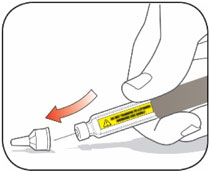 |
Step 14:
|
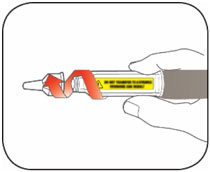 |
Step 15:
|
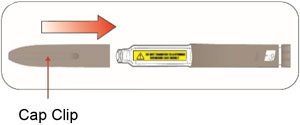 |
- Put your used needles in a FDA-cleared sharps disposal container right away after use. Do not throw away (dispose of) loose needles in your household trash.
- If you do not have a FDA-cleared sharps disposal container, you may use a household container that is:
- –
- made of a heavy-duty plastic,
- –
- can be closed with a tight-fitting, puncture-resistant lid, without sharps being able to come out,
- –
- upright and stable during use,
- –
- leak-resistant, and
- –
- properly labeled to warn of hazardous waste inside the container.
- When your sharps disposal container is almost full, you will need to follow your community guidelines for the right way to dispose of your sharps disposal container. There may be state or local laws about how you should throw away used needles and syringes. For more information about safe sharps disposal, and for specific information about sharps disposal in the state that you live in, go to the FDA's website at: http://www.fda.gov/safesharpsdisposal
- Do not dispose of your used sharps disposal container in your household trash unless your community guidelines permit this. Do not recycle your used sharps disposal container.
- The used Pen may be discarded in your household trash after you have removed the needle.
Storing your Pen
Unused Pens
- Store unused Pens in the refrigerator at 36°F to 46°F (2°C to 8°C).
- Do not freeze LYUMJEV. Do not use if it has been frozen.
- Unused Pens may be used until the expiration date printed on the label if the Pen has been kept in the refrigerator.
In-use Pen
- Store the Pen you are currently using at room temperature [up to 86°F (30°C)]. Keep away from heat and light.
- Throw away the LYUMJEV KwikPen you are using after 28 days, even if it still has insulin left in it.
General information about the safe and effective use of your Pen
- Keep your Pen and needles out of the sight and reach of children.
- Do not use your Pen if any part looks broken or damaged.
- Always carry an extra Pen in case yours is lost or damaged.
Troubleshooting
- If you cannot remove the Pen cap, gently twist the cap back and forth, and then pull the cap straight off.
- If the dose knob is hard to push:
- –
- pushing the dose knob more slowly will make it easier to inject.
- –
- your needle may be blocked. Put on a new needle and prime the Pen.
- –
- you may have dust, food, or liquid inside the Pen. Throw the Pen away and get a new Pen.
If you have any questions or problems with your LYUMJEV KwikPen, contact Lilly at 1-800-545-5979 or call your healthcare provider for help. For more information on LYUMJEV KwikPen and insulin, go to www.lyumjev.com.
Scan this code to launch
www.lyumjev.com
This Instructions for Use has been approved by the U.S. Food and Drug Administration.
Manufactured by:
Eli Lilly and Company
Indianapolis, IN 46285, USA
US License Number 1891
LYUMJEV™ and LYUMJEV™ KwikPen® are trademarks of Eli Lilly and Company.
Copyright © 2020, Eli Lilly and Company. All rights reserved.
| LYUMJEV KwikPen meets the current dose accuracy and functional requirements of ISO 11608-1. |
Issued: June 2020
LUMKP200-0001-IFU-20200615
PACKAGE LABEL – LYUMJEV U100 Vial Carton
NDC 0002-7728-01
LYUMJEVTM
(insulin lispro-aabc)
injection
100 units per mL (U-100)
for subcutaneous or intravenous use
10 mL multiple-dose vial
Rx only
www.lyumjev.com
Lilly
PACKAGE LABEL – LYUMJEV U100 Cartridges 5 Count Carton
NDC 0002-7726-05
5 x 3 mL Cartridges
LYUMJEVTM
(insulin lispro-aabc)
injection
For Single Patient Use Only
100 units per mL (U-100)
For subcutaneous use
Rx only
For use in Eli Lilly and Company's HumaPen® LUXURA®HD and other compatible insulin delivery devices.
www.lyumjev.com
Lilly
PACKAGE LABEL – LYUMJEV U100 KwikPen 5 Count Carton
Dispense in this sealed carton.
NDC 0002-8207-05
LYUMJEVTM KwikPen®
(insulin lispro-aabc)
injection
For Single Patient Use Only
100 units per mL (U-100)
For subcutaneous use
5 x 3 mL prefilled pens
Rx only
Needles not included
This device is recommended for use with Becton, Dickinson and Company's insulin pen needles.
Lilly
PACKAGE LABEL – LYUMJEV U100 Junior KwikPen 5 Count Carton
Dispense in this sealed carton.
NDC 0002-8351-05
LYUMJEVTM
Junior KwikPen®
(insulin lispro-aabc)
injection
For Single Patient Use Only
100 units per mL (U-100)
This pen can deliver 0.5 (1/2) to 30 units in one injection.
5 x 3 mL prefilled pens
For subcutaneous use
Rx only
Needles not included
This device is recommended for use with Becton, Dickinson and Company's insulin pen needles.
Lilly
PACKAGE LABEL – LYUMJEV U100 Tempo Pen 5 Count Carton
Dispense in this sealed carton.
NDC 0002-8235-05
LYUMJEVTM Tempo PenTM
(insulin lispro-aabc)
injection
For Single Patient Use Only
100 units per mL (U-100)
For subcutaneous use
5 x 3 mL prefilled pens
Rx only
Needles not included
This device is recommended for use with Becton, Dickinson and Company's insulin pen needles.
Lilly
PACKAGE LABEL – LYUMJEV U200 KwikPen 5 Count Carton
Dispense in this sealed carton.
NDC 0002-8228-27
LYUMJEVTM KwikPen®
(insulin lispro-aabc)
injection
For Single Patient Use Only
200 units per mL (U-200)
For subcutaneous use
2 x 3 mL prefilled pens
Rx only
Needles not included
This device is recommended for use with Becton, Dickinson and Company's insulin pen needles.
Lilly
DO NOT TRANSFER TO A SYRINGE SEVERE OVERDOSE CAN RESULT
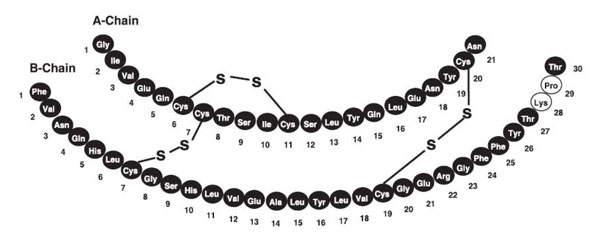
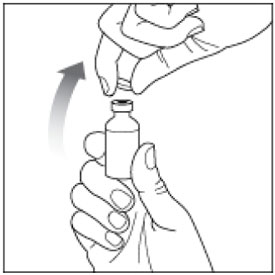
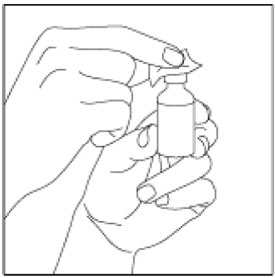
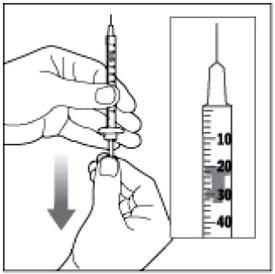 (Example Dose: 20 units shown)
(Example Dose: 20 units shown)
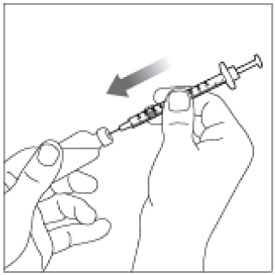
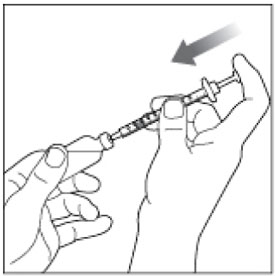
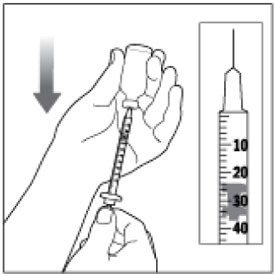 (Example Dose: 20 units, plunger is shown at 24 units)
(Example Dose: 20 units, plunger is shown at 24 units)
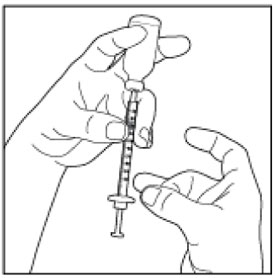
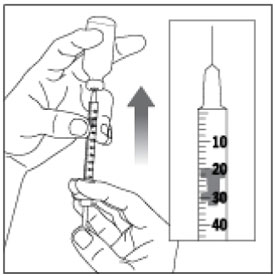 (Example Dose: 20 units shown)
(Example Dose: 20 units shown)
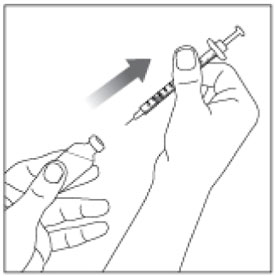
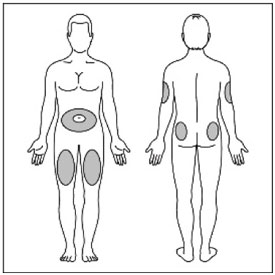
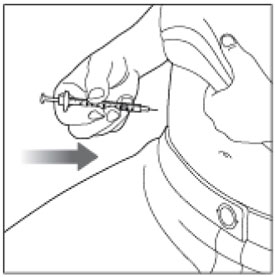
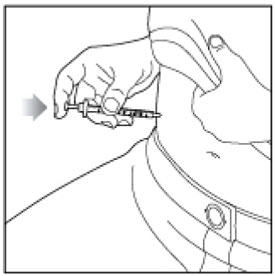
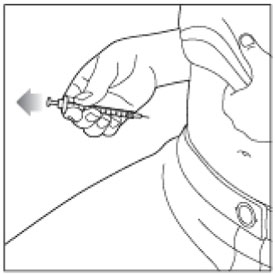





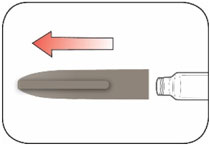
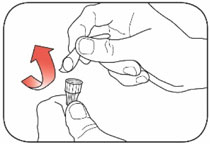
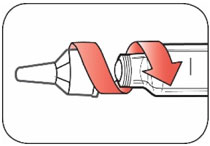
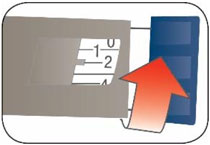
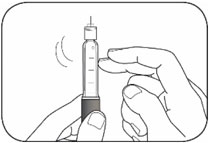
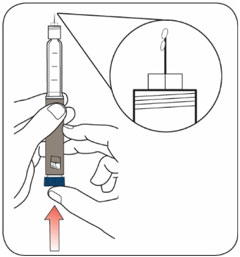
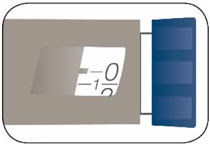
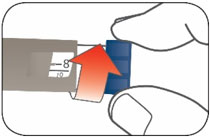
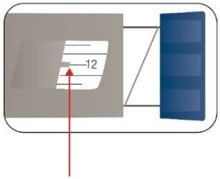 Example: 12 units shown in the dose window
Example: 12 units shown in the dose window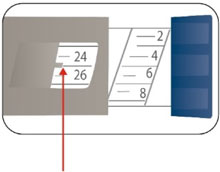 Example: 25 units shown in the dose window
Example: 25 units shown in the dose window
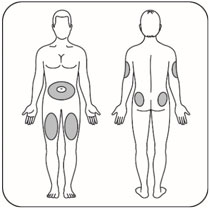
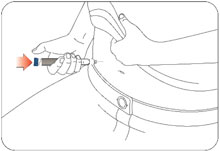
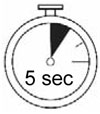


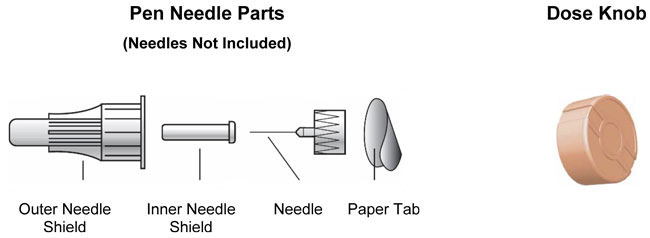
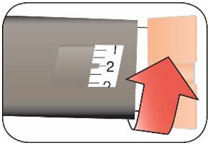
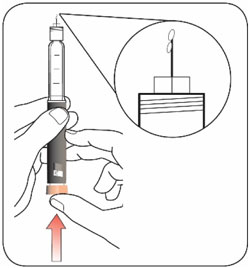
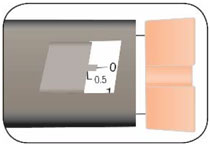
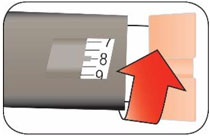
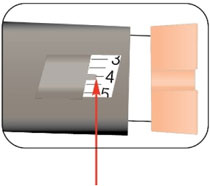 Example: 4 units shown in the dose window
Example: 4 units shown in the dose window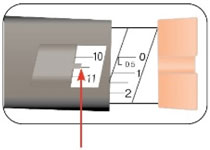 Example: 10.5 (10 ½) units shown in the dose window
Example: 10.5 (10 ½) units shown in the dose window
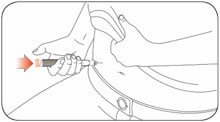



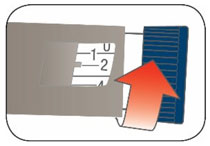
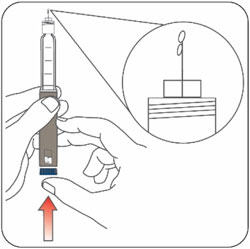
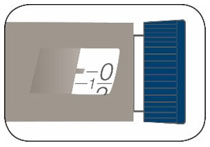
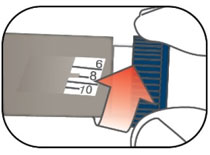
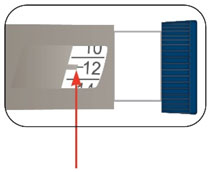 Example: 12 units shown in the dose window
Example: 12 units shown in the dose window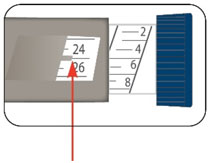 Example: 25 units shown in the dose window
Example: 25 units shown in the dose window
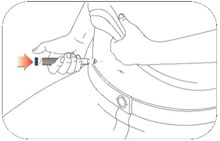


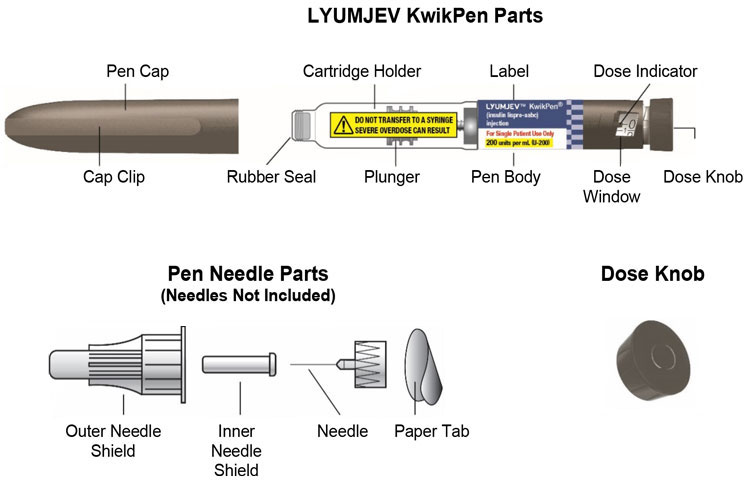
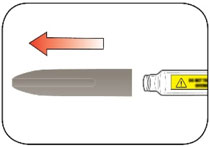
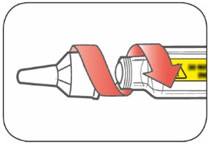
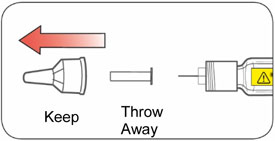
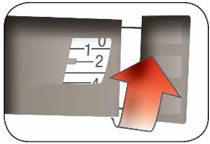
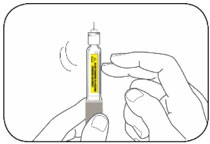
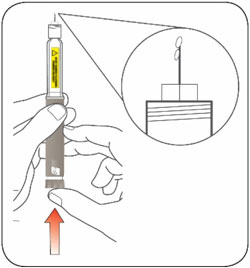
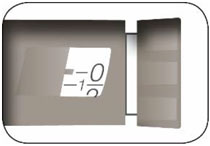
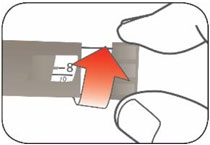
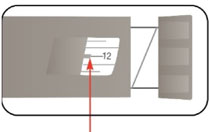
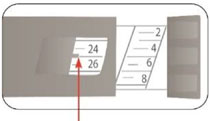 Example: 25 units shown in the dose window
Example: 25 units shown in the dose window
